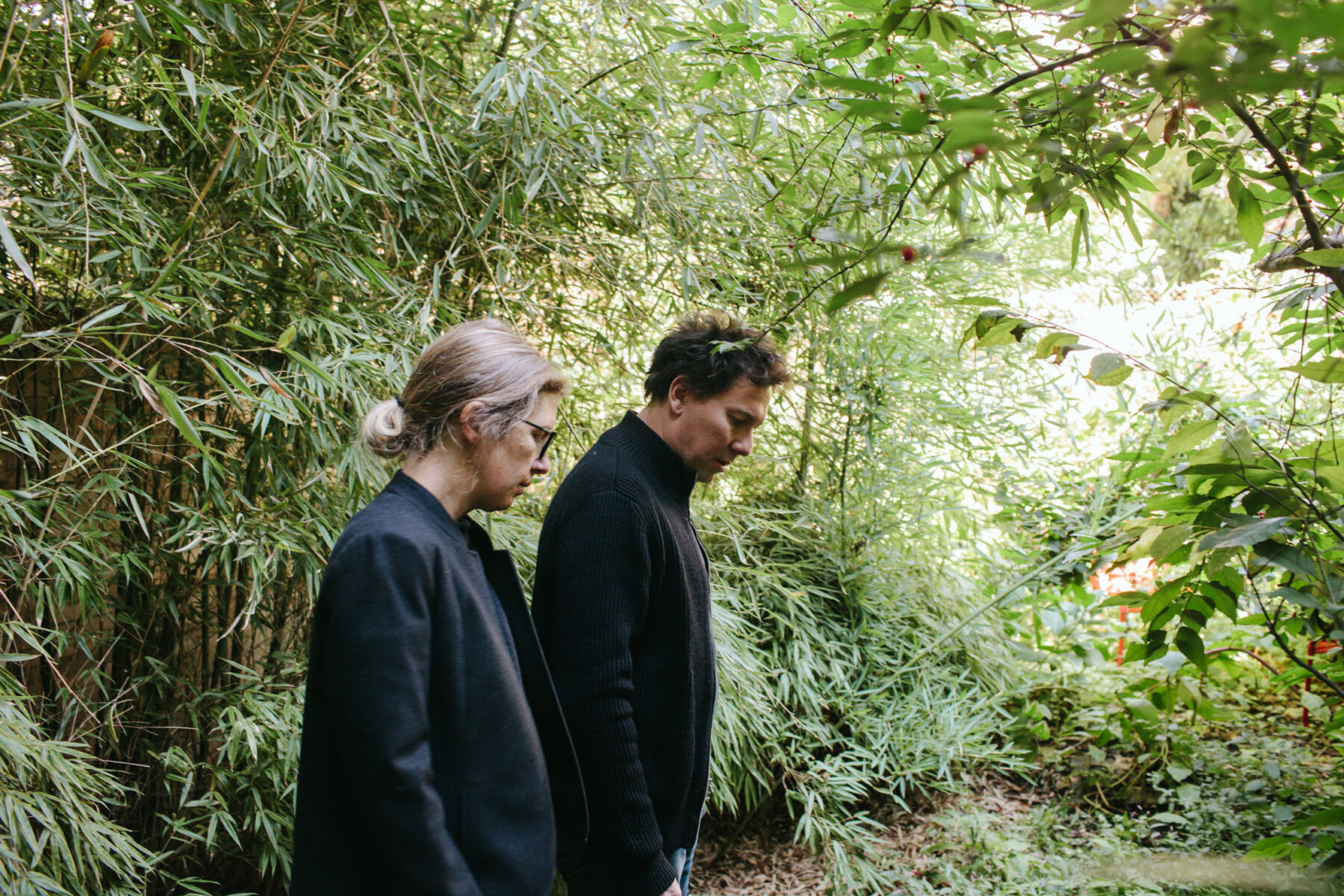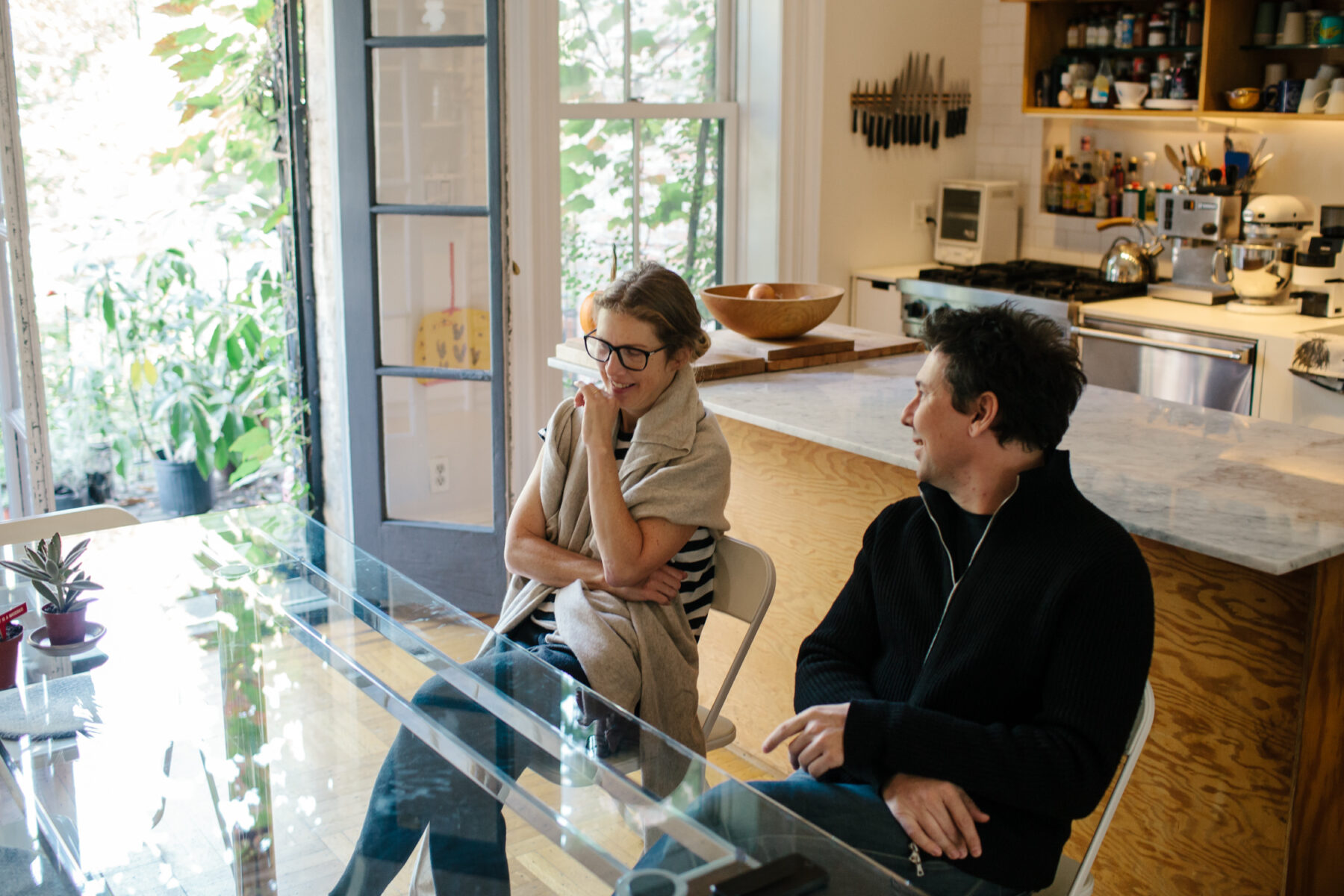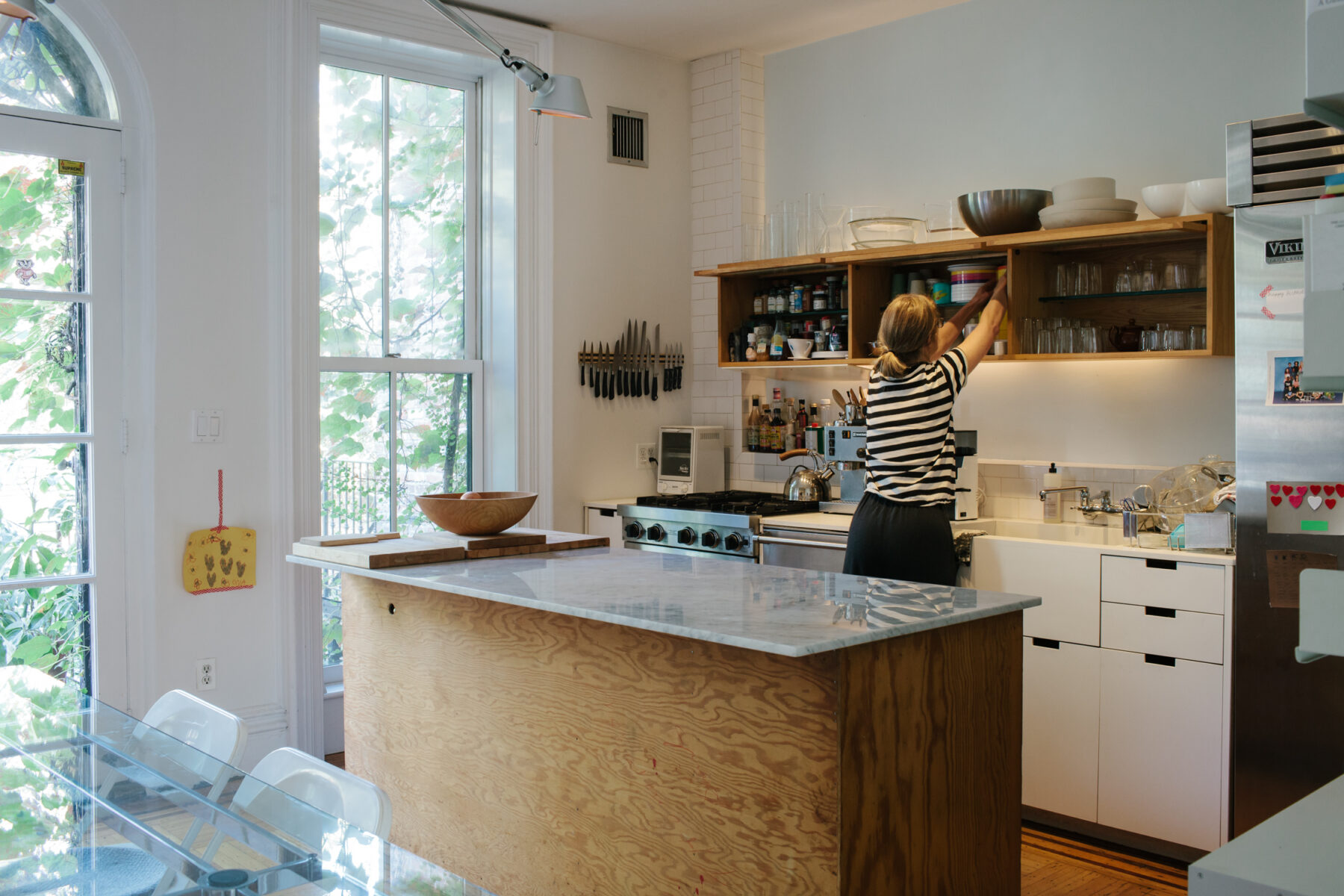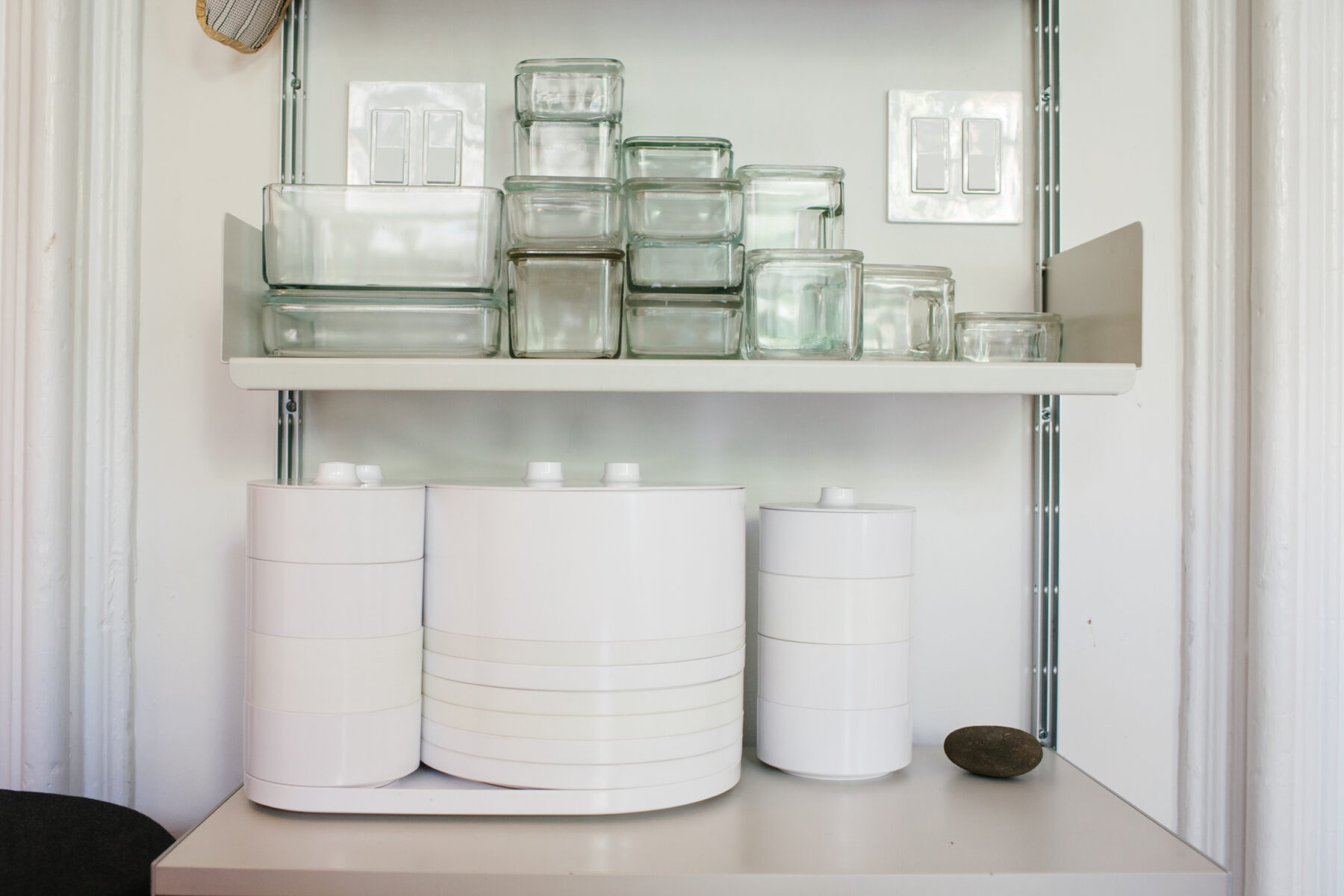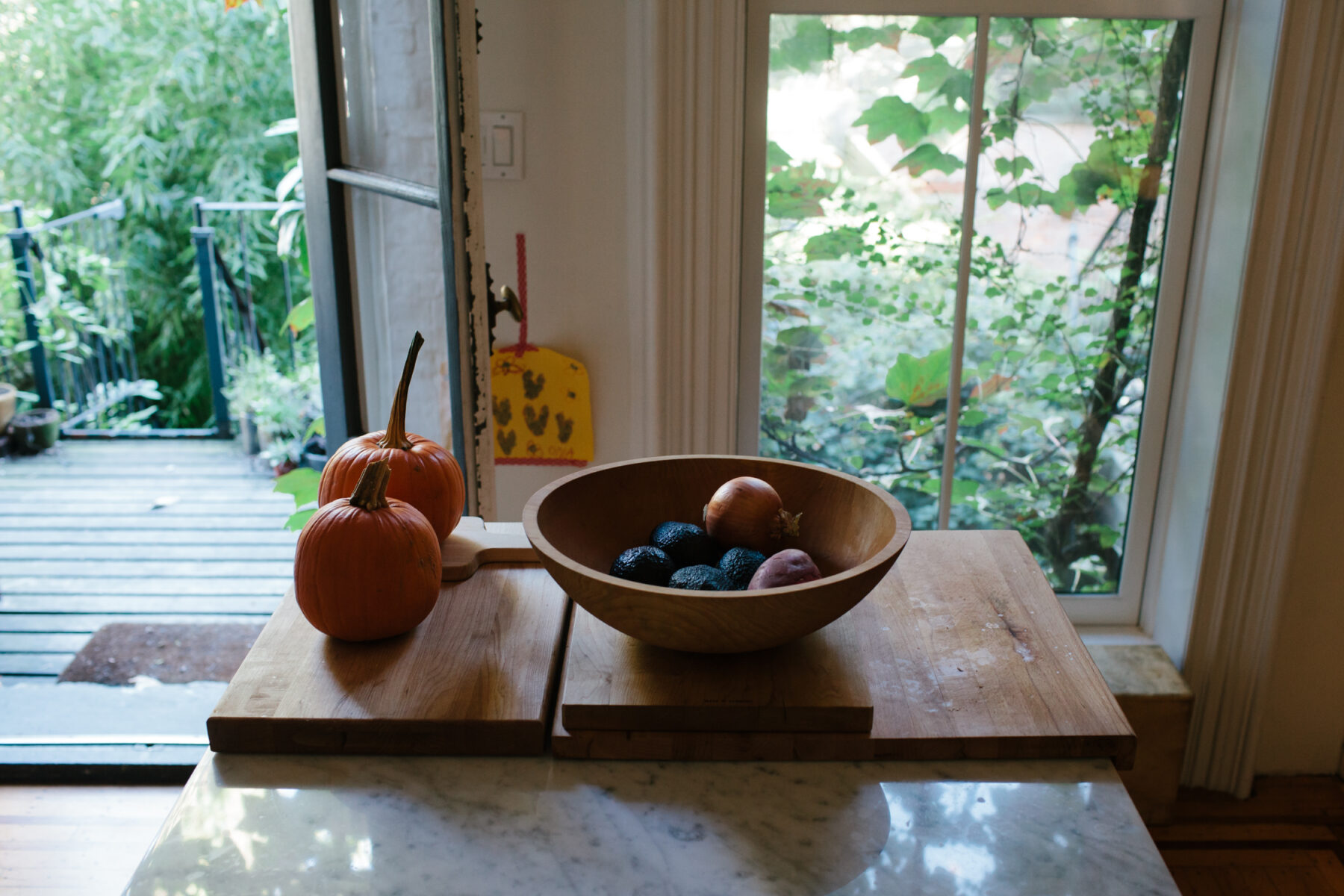When speaking with Elizabeth Beer and Brian Janusiak about their decade-long collaboration as co-founders of the multidisciplinary design studio Various Projects, and as husband and wife, certain words arise more frequently than others. One of these words is “unexpected.” Others include “excitement,” “digression,” and, notably, “surprise.”
To the outsider, it seems the very opposite of surprising that the pair’s joint efforts — which include the opening of Project No. 8, a shop with locations on the Lower East Side and at Manhattan’s Ace Hotel; the production of a line of acrylic key tags and hand-knit birds; the publication of several books; and a partnership in an art gallery in Berlin — would be anything short of successful.
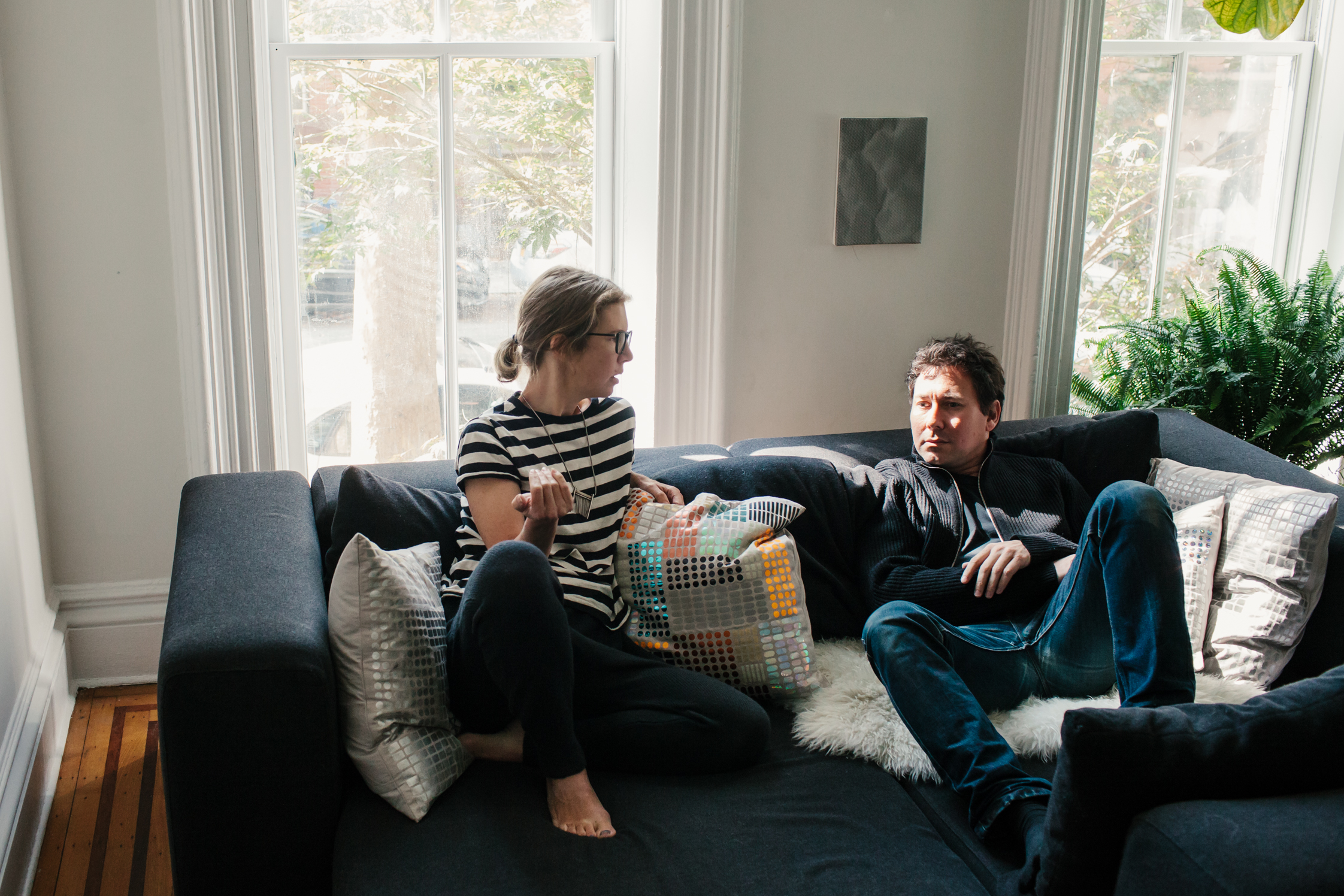
Still, there’s a tinge of wonder in the their voices as they describe how their many projects—which now surely outnumber eight—came to fruition. “We didn’t expect it to turn out this way,” they’ll say when asked to comment on their creative outlets. “It just happened.”
This portrait is part of our ongoing collaboration with ZEIT Online who present a special curation of our pictures on ZEIT Magazin Online.
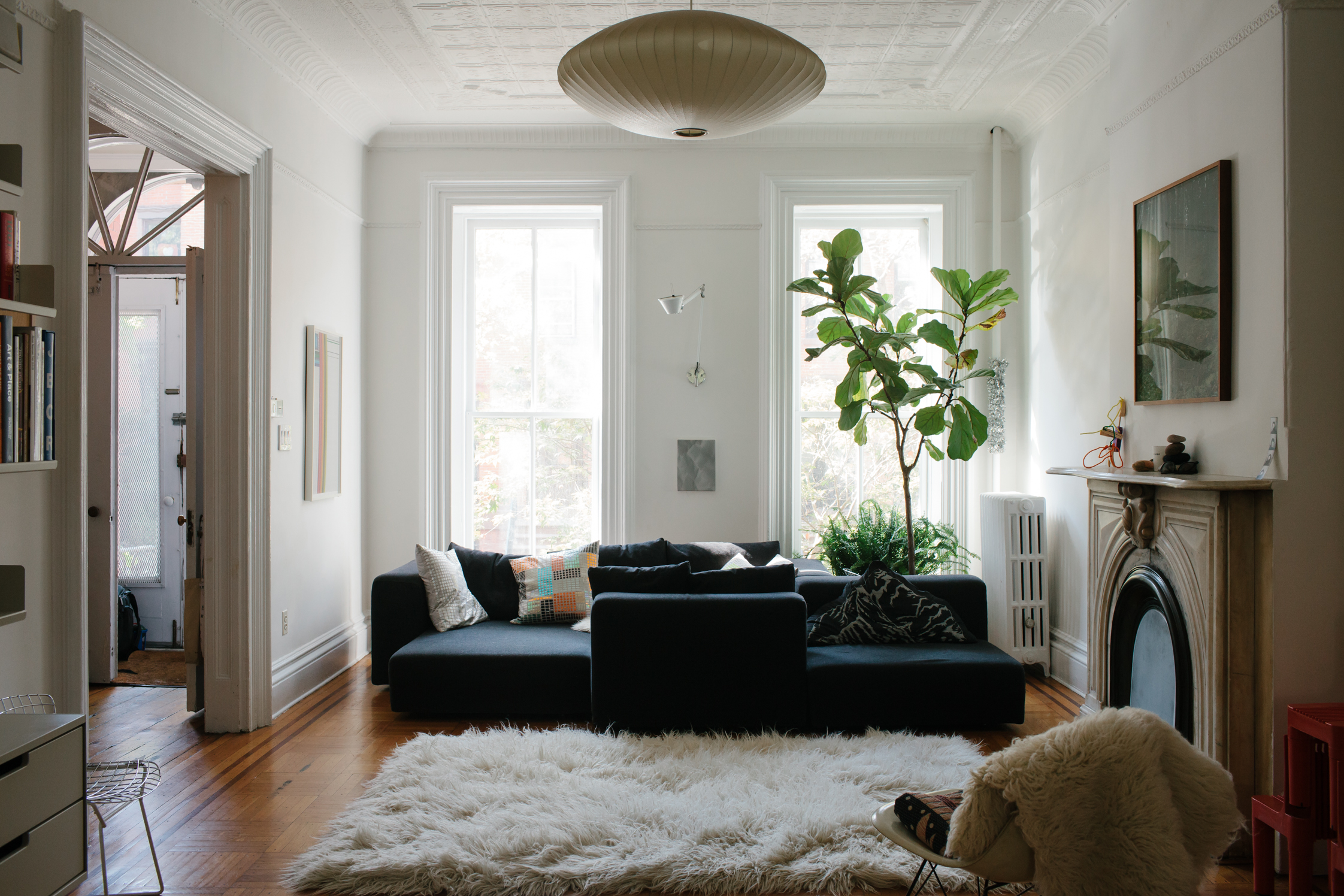
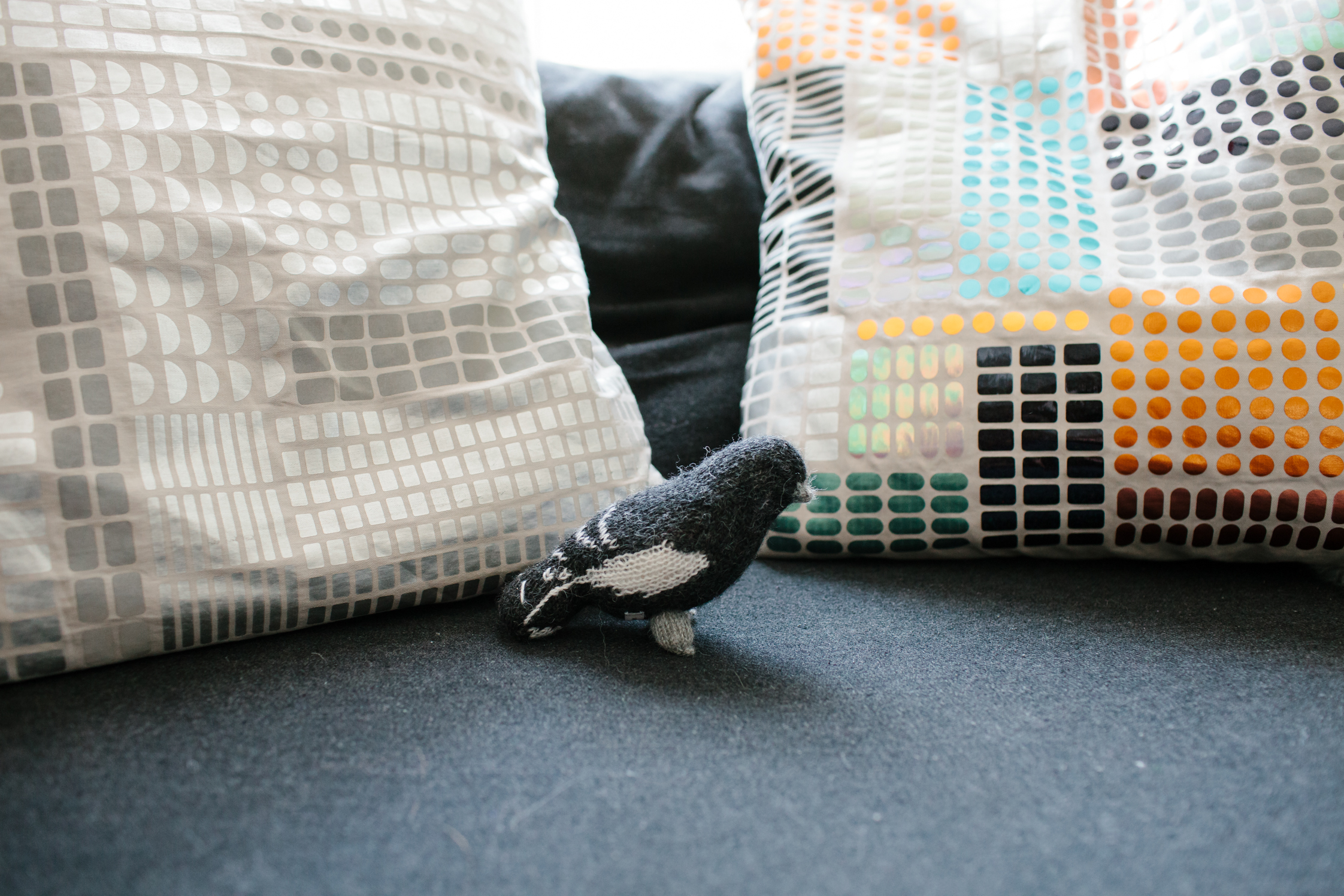
-
To start, how did the two of you meet?
Elizabeth: We met very randomly at a party, the summer of 2004. We immediately began talking about projects we were involved in at the time. We started talking about work right away, and we’ve never stopped.
-
What has been the overarching theme of your conversations about work, if any? And how did the idea for ‘Various Projects’ and ‘Project No. 8’ come about?
Brian: We’re interested in ideas of distribution, and how things we make live in the world. We began with that conversation and watched it evolve — it pretty quickly became about starting ‘Various Projects’ and deciding to have a store. We knew we wanted to create a public space to bring in work that others were making and that we were making, but we didn’t want this space to be a gallery. We wanted it to feel immediately accessible, regardless of what was in it. The items in the space didn’t need to be perceived as art — it could be more leveling than that.
Elizabeth: We both have some art background and some design background, so we’ve always sort of fallen between categories in some ways. The store, because it’s retail, falls more on the side of design than it does art, but there’s some crossover there, too. The people whose work we’re attracted to often fall between categories — Boudicca, for example, are an amazing team that works out of London. Their product is fashion, but their work goes so far beyond that. I’d say if any theme has been our overarching theme, it’s that: falling between categories.
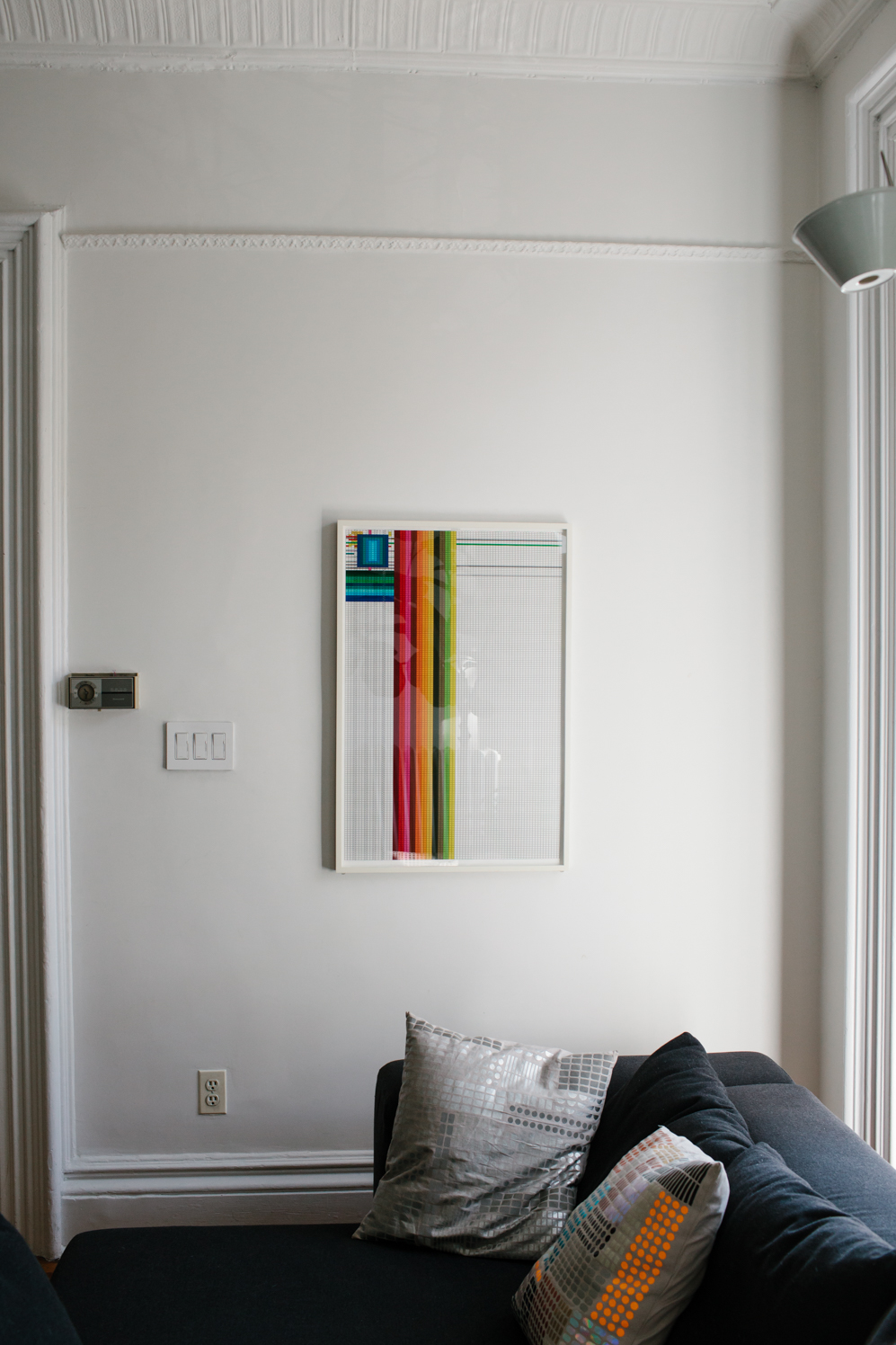
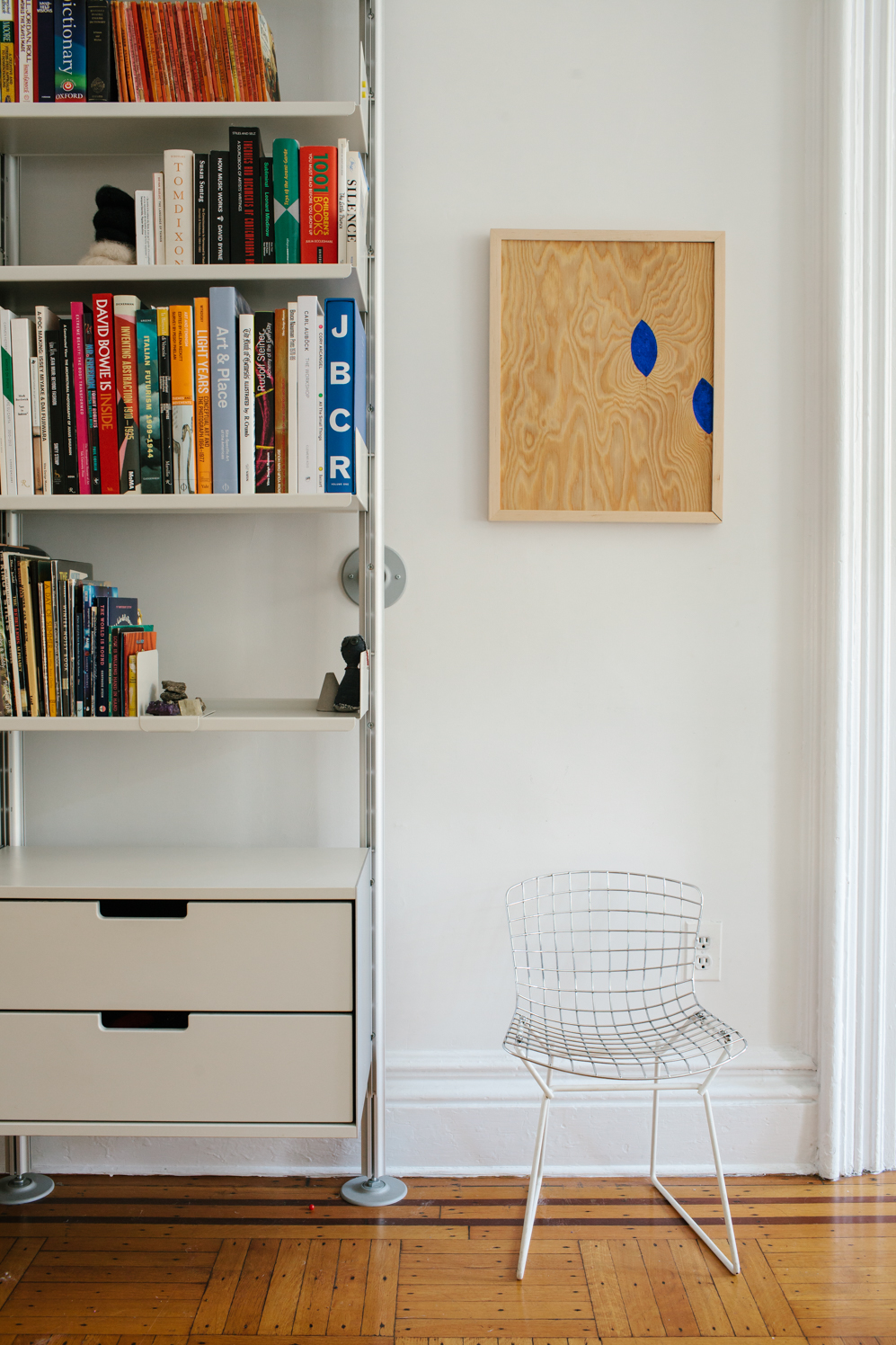
-
Elizabeth, you studied history and art in school, and Brian, you went to school for design and printmaking. Had you ever envisioned that this would be the path you’d take?
Brian: No, none of this was planned, really. It just happened. We both tend to make it up as we go along. Sometimes that works and sometimes it doesn’t, but we do everything very earnestly. Our process, I think, involves a lot of stumbling through things.
Elizabeth: Opening a store may have seemed like a bad idea at the time, having just finished graduate school in art and design. It wasn’t the most obvious choice, but it allowed us a certain freedom that a more traditional path may not have. That’s how we view it in retrospect. -
You’ve said in the past that you’re not fashion people. Do you consider yourselves art people? Design people?
Brian: We didn’t mean that in a bad way. It’s just the truth. We tend to define ourselves less as fashion people and more as design people. Our interests lie in so many different places, and we spend our time doing so many different projects. Fashion was never our social outlet — some people really live it, but it was never our main thing
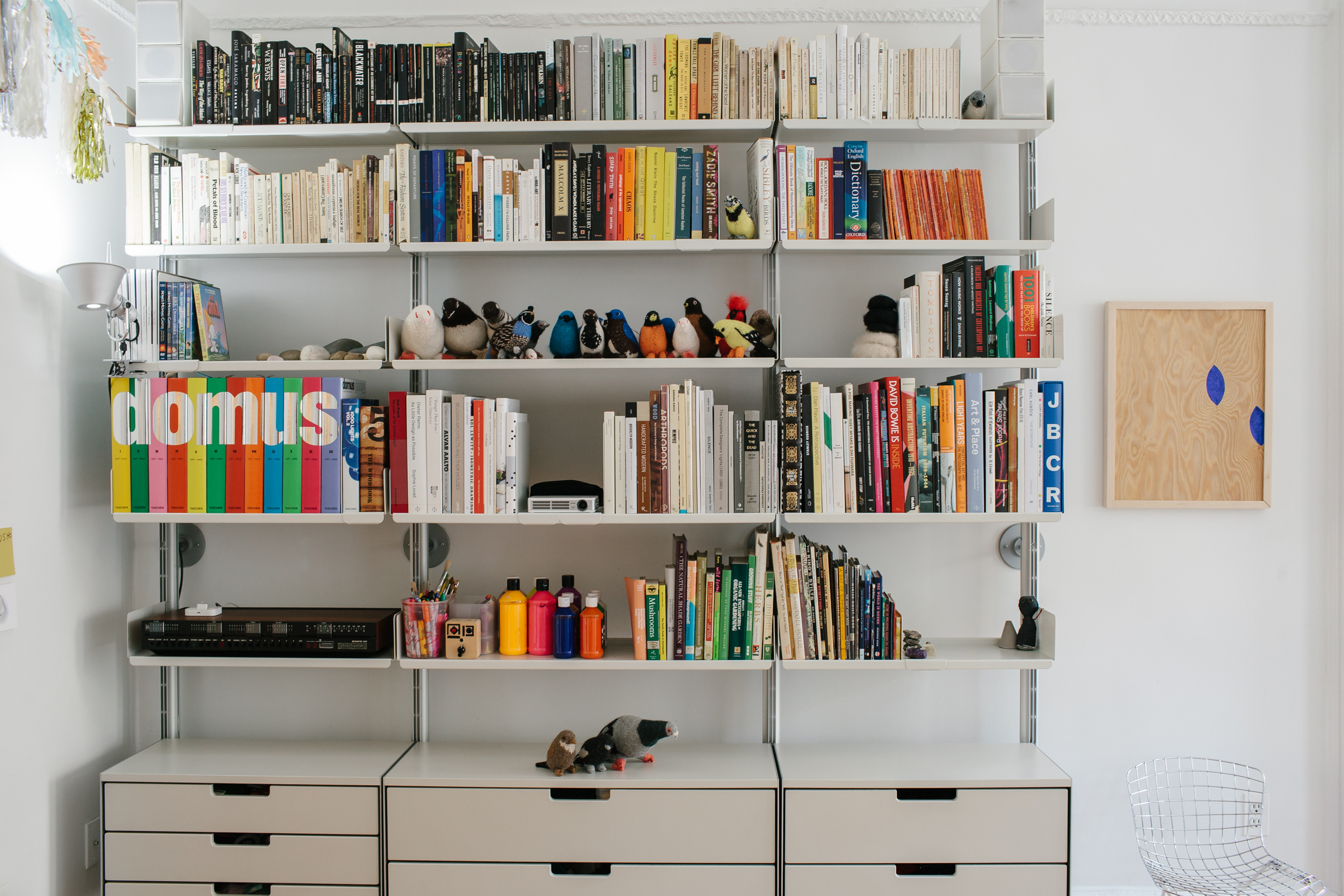
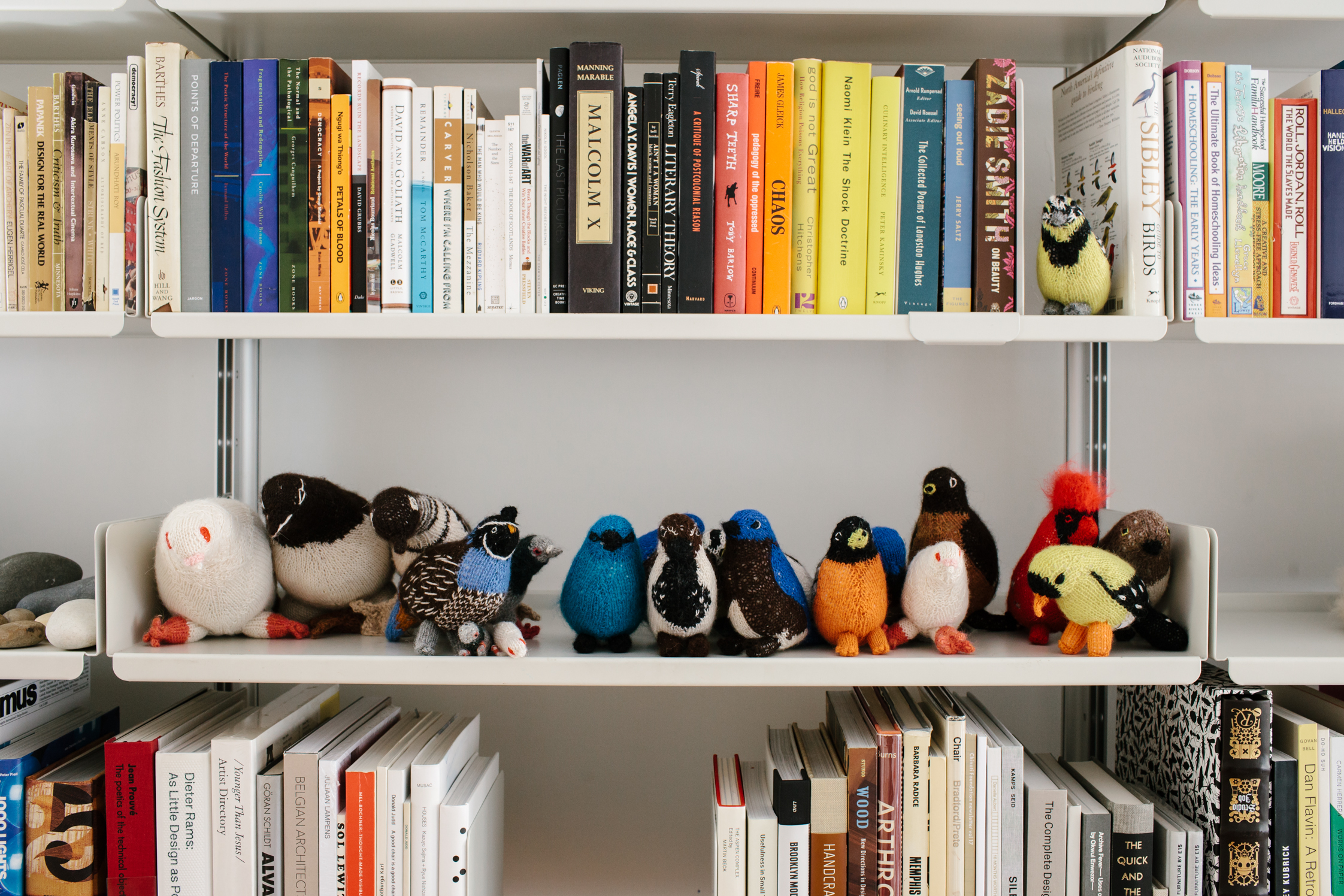
-
Speaking of different projects, how did the stuffed birds come about?
Elizabeth: The pigeon was first. We were inviting people to create different souvenir items for the Ace store, and this was ours. We think of the pigeon as the unofficial New York state bird, so it seemed like a fun starting point for the project. And it was a huge hit, which we weren’t counting on — so eventually, we thought we’d start to make other birds. We’ve done almost all of the state birds, and some endangered species, too. And now we’re working on the blackbird — the pigeon is to New York as the blackbird is to Berlin.
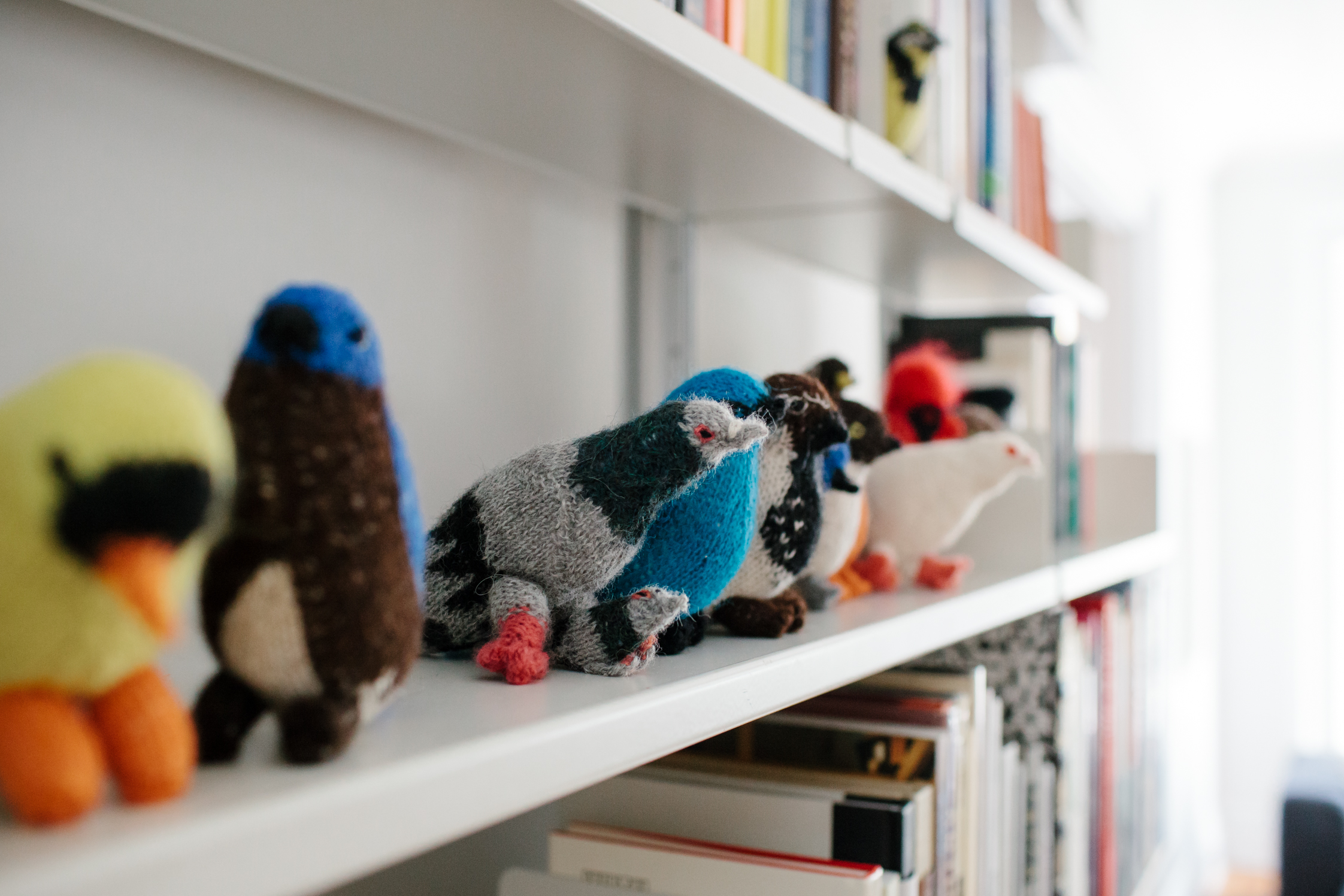
-
Where are the birds produced?
Elizabeth: They’re hand-knit at an amazing fair-trade factory in Bolivia, and amazingly, each knitter interprets the birds slightly differently. Some turn out looking happier than others. We once received a batch of bluebirds that looked terribly sad — the factory workers told us that the knitter who made them was going through a really hard time, and without realizing it, was making these very depressed-looking birds.
Brian: In general, they don’t really look exactly the same batch-to-batch. They’re a little different every time. I think that’s incredibly charming.
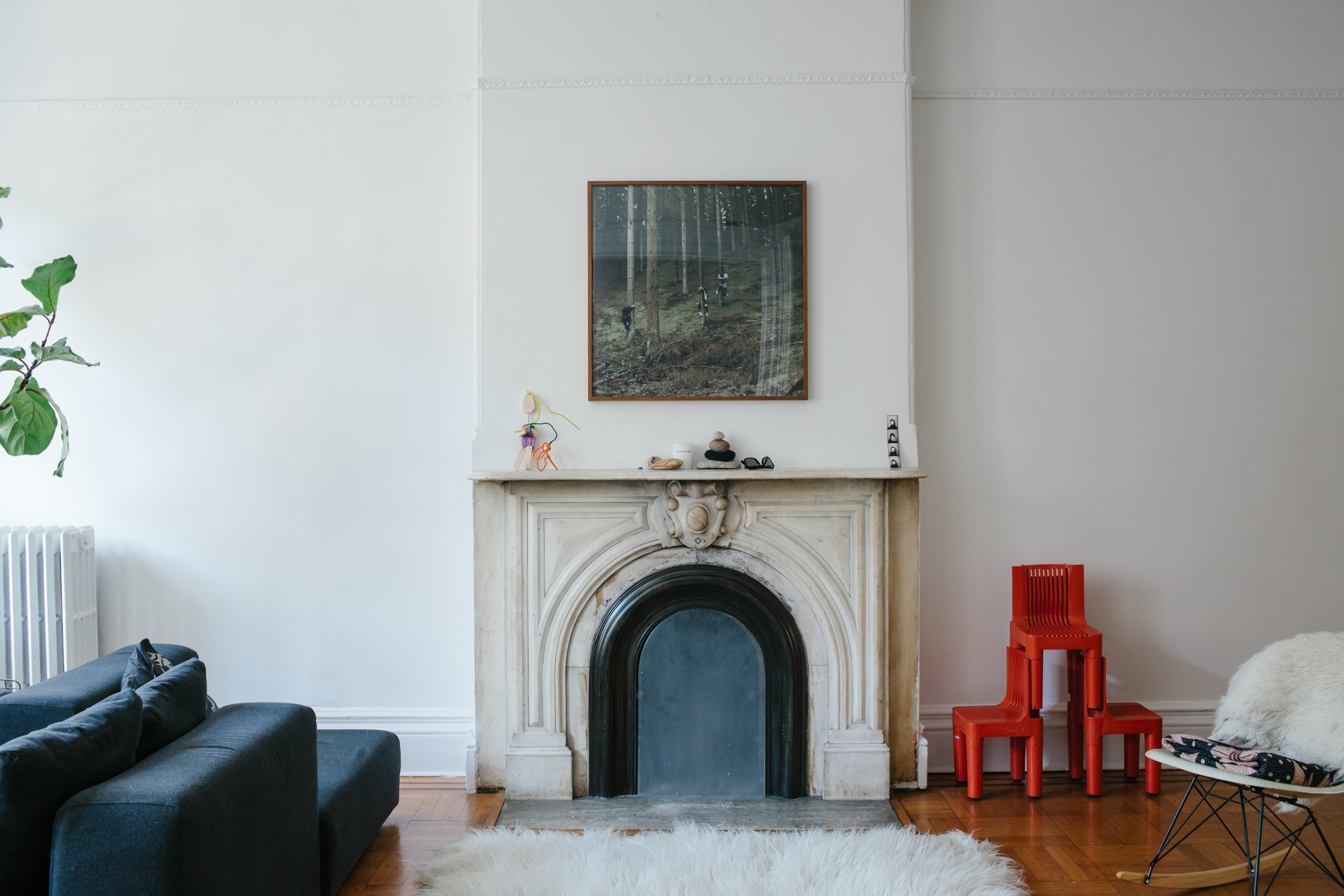
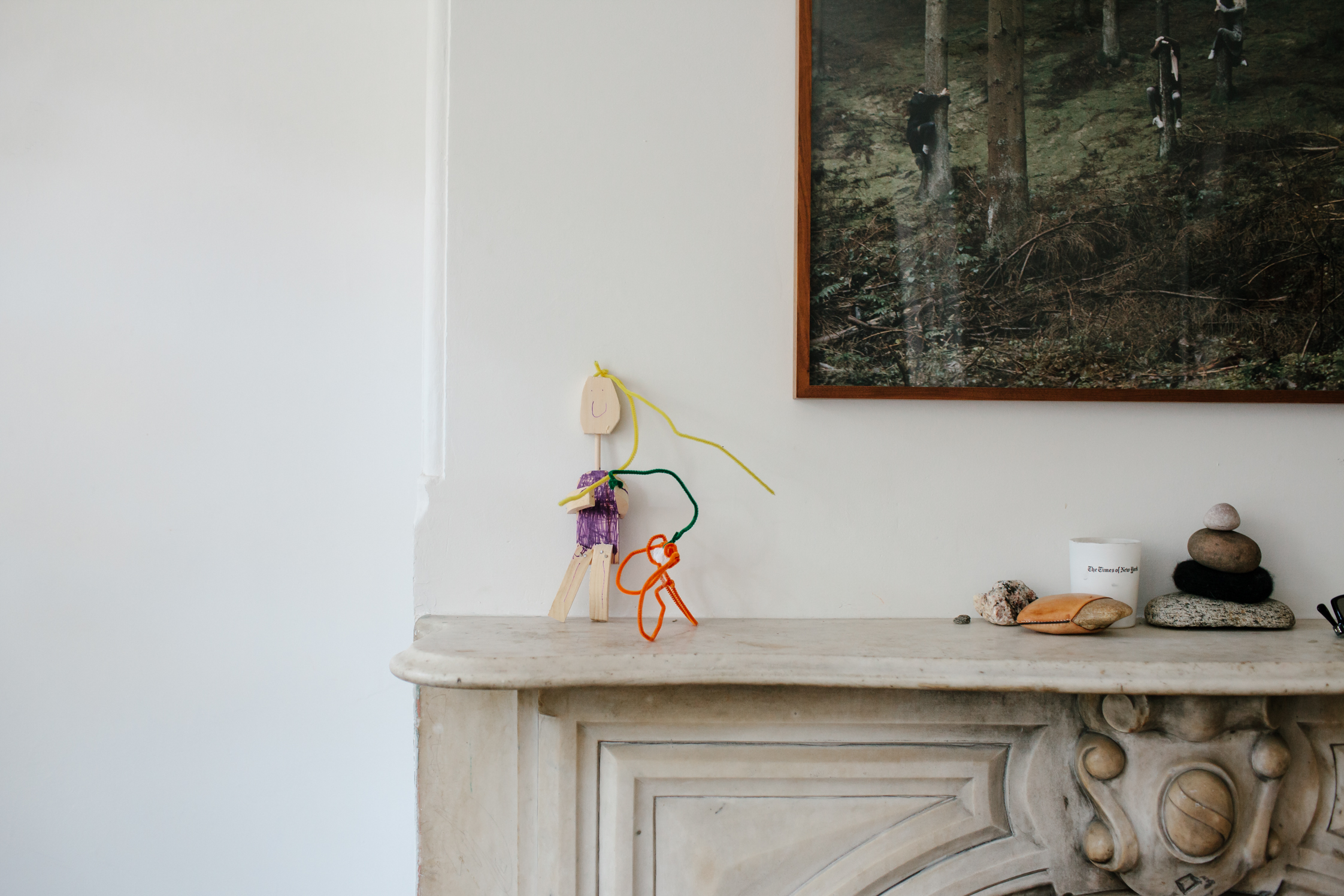
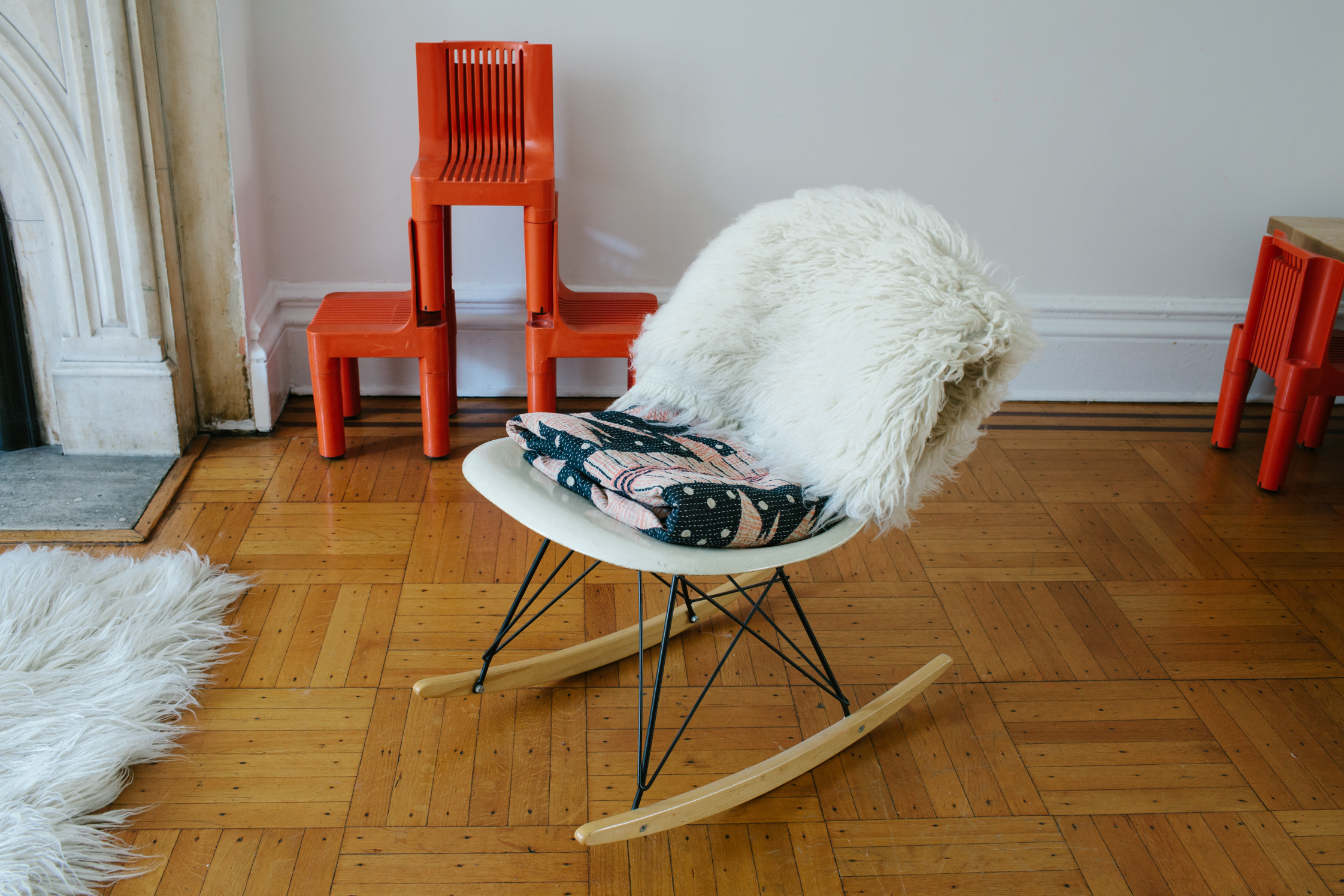
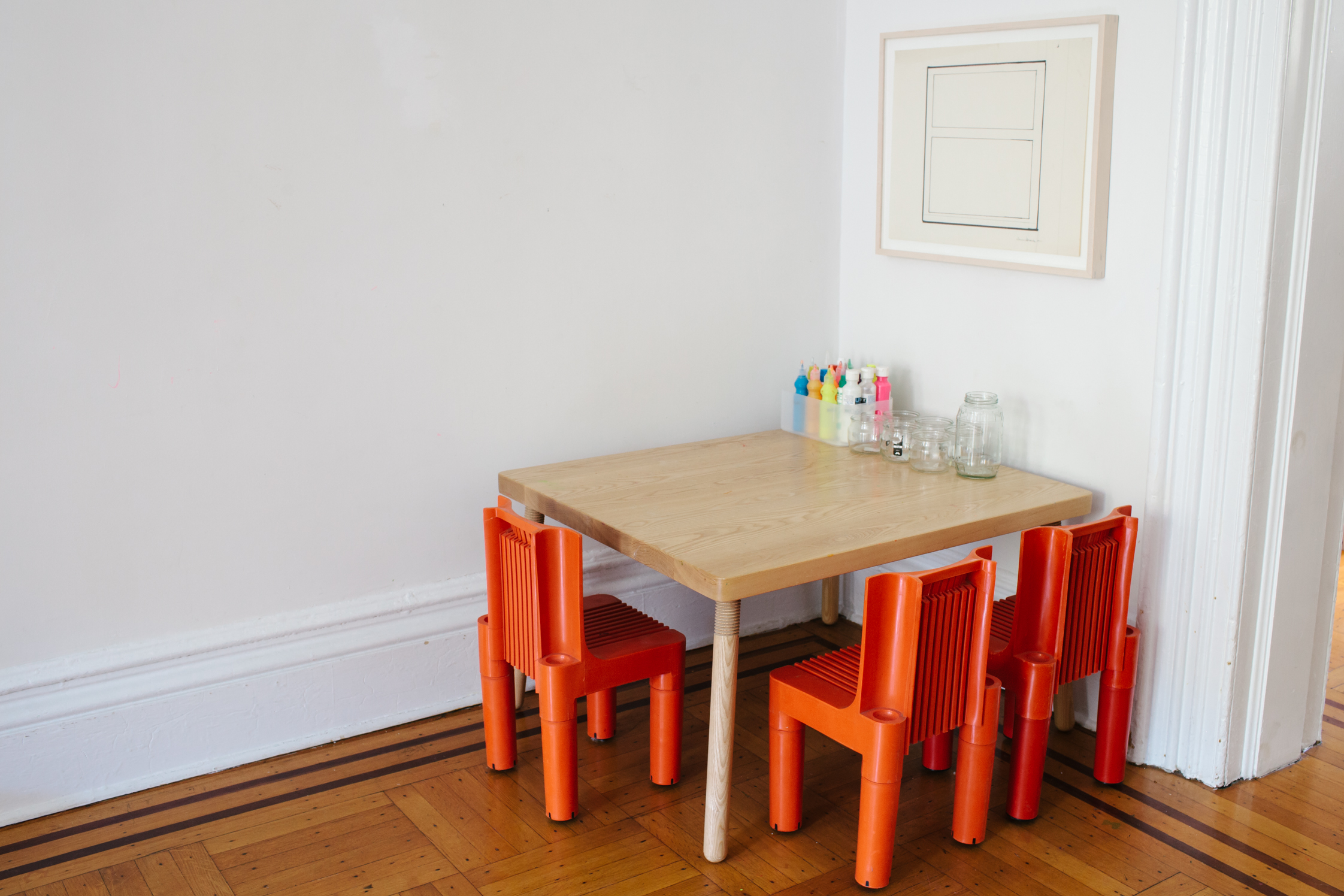
-
Let’s talk about your home. How long have you been in New York, and in this building?
Brian: I came to New York after graduate school and I’ve been here since.
Elizabeth: I was born and raised here. I’m a third or fourth generation Manhattanite. I’ve been in this building here in Brooklyn for 17 years. -
What do you love about it? Do you have any favorite items or possessions?
Brian: Most things have just found their way here. There’s a great story behind the kitchen island with the wood and the marble. We needed a space to prepare things in the kitchen, but when we started looking, nothing seemed quite right. Then, we found this. It’s a built-in that was removed from a Neutra Case Study House in California. It was exactly the right size and shape, and we had a marble top made for it. It’s beautiful and simple, and it functions perfectly for a kitchen.
Elizabeth: We also love the couch, which is modular — you can rearrange it and take it apart. And the print above the hearth, which is called Hold On As Long As You Can, was the first photo we bought. It’s by Nina Beier of Janfamily.
Brian: I love our daughter’s art table and chairs. The chairs are the first production plastic chairs for kids by Richard Sapper for Kartell. They stack and become these sculptural objects. I love them, and I love that our daughter is growing up with them.
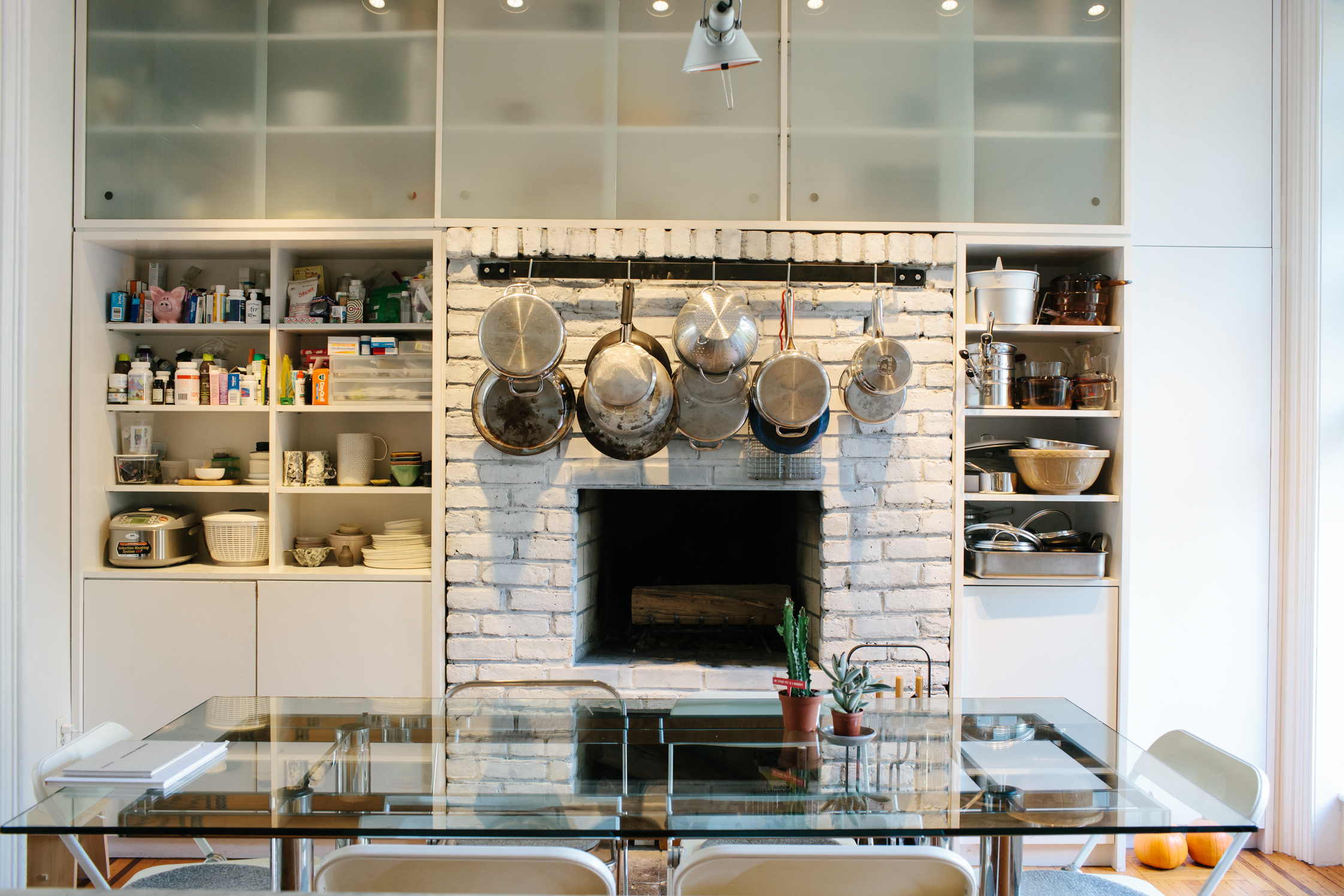
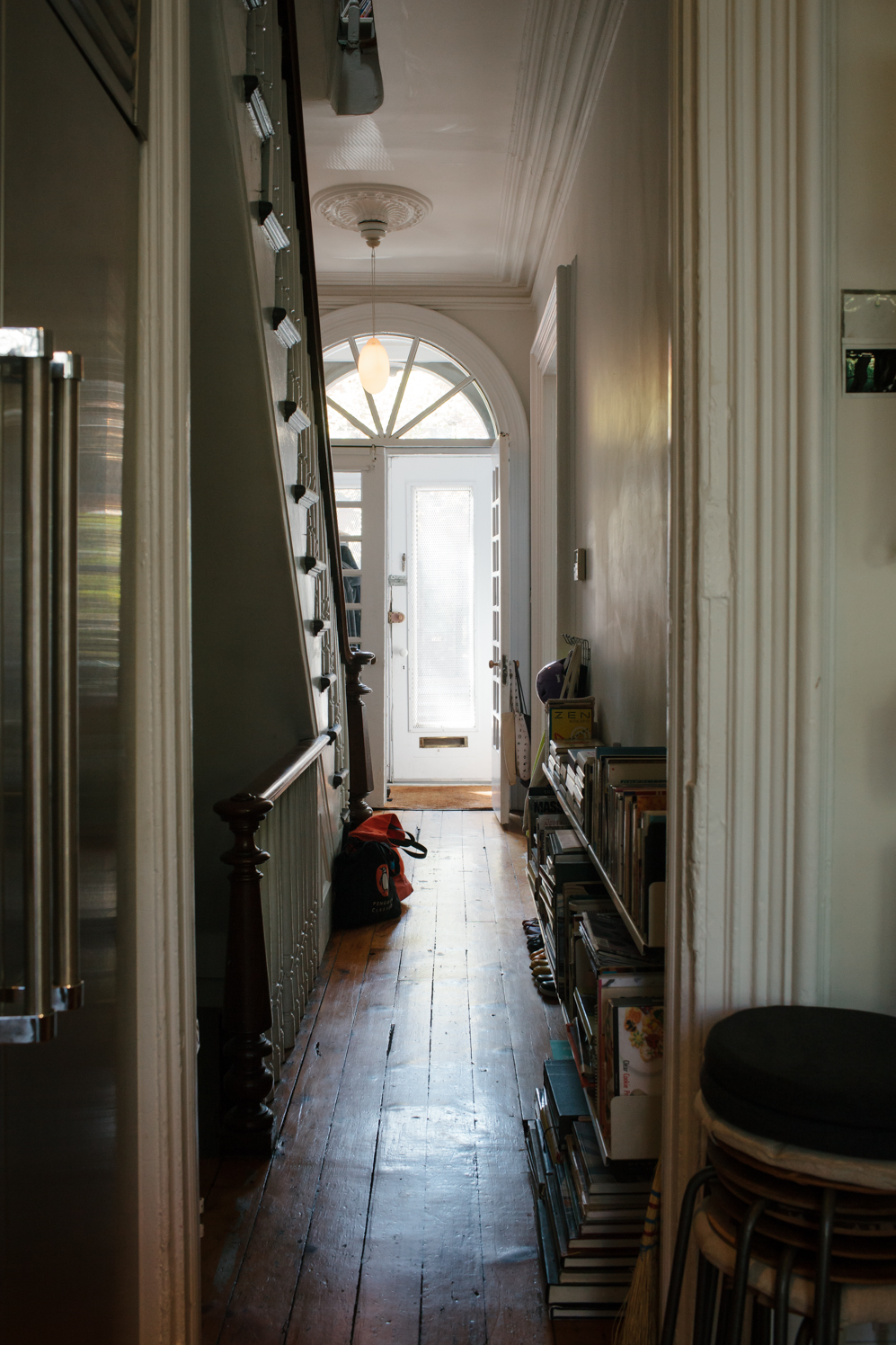
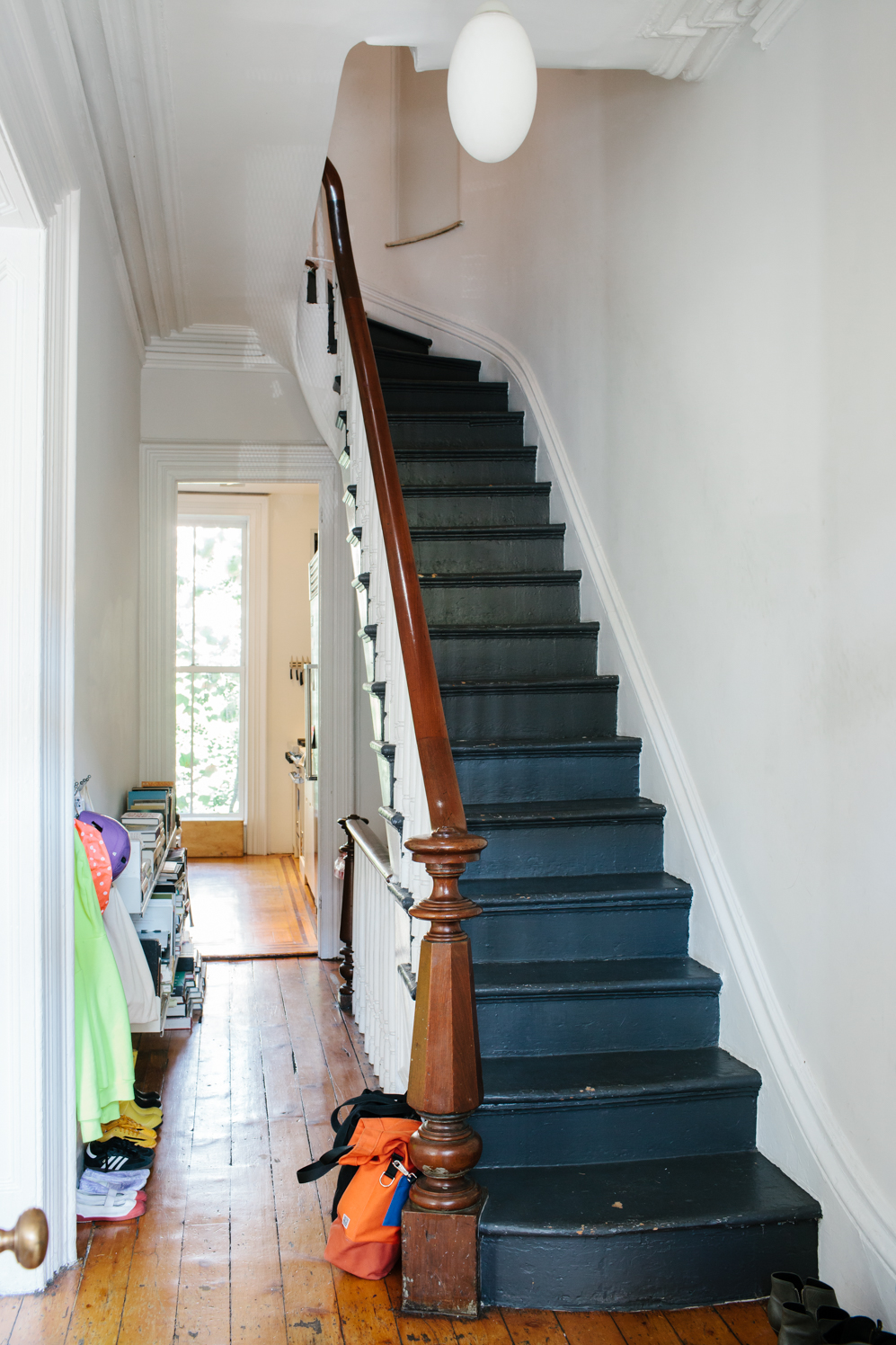
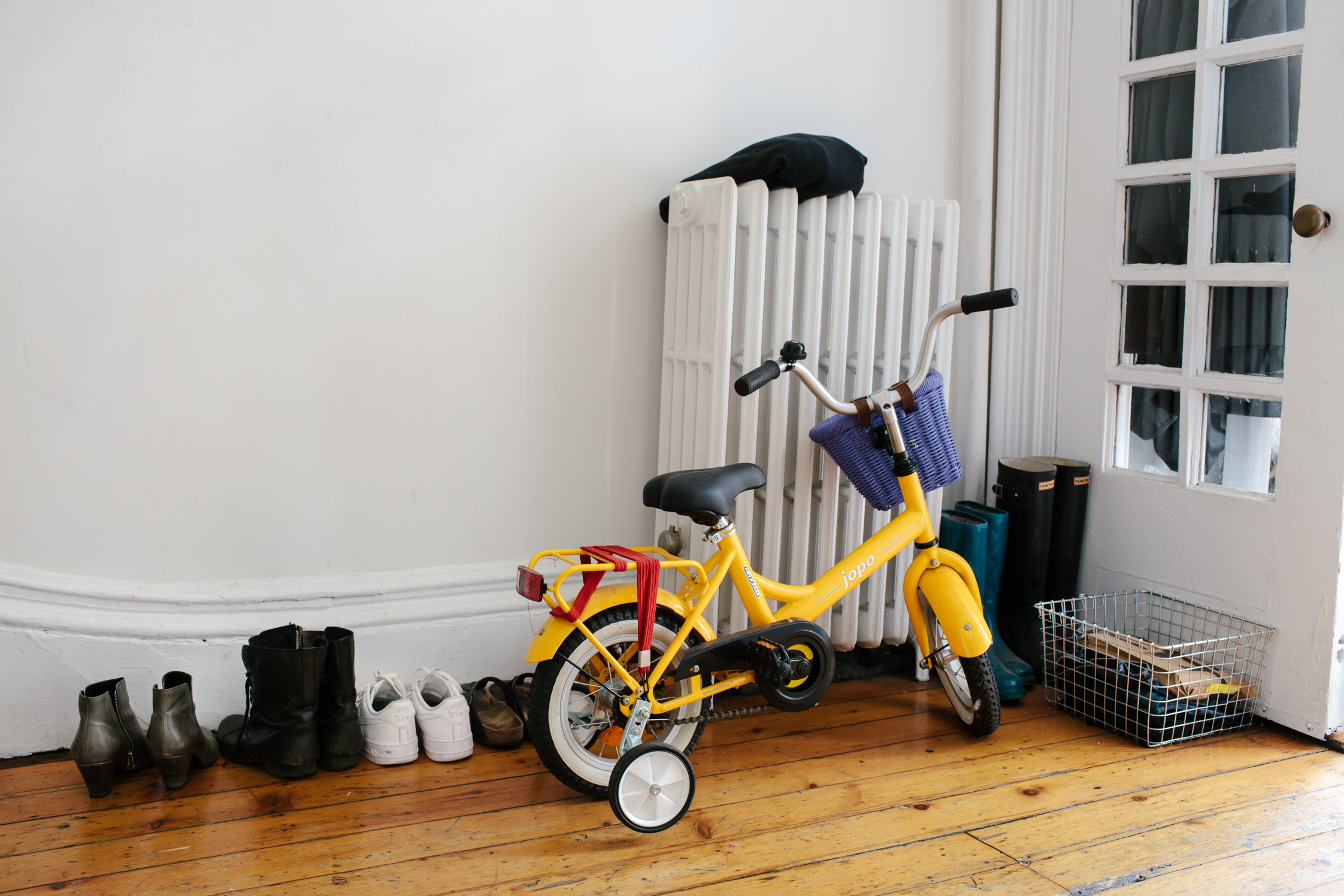
-
This house seems like a wonderland for a child — and the neighborhood is very kid-friendly, too. Elizabeth, what brought you to Cobble Hill in the first place?
Elizabeth: I ended up here because most of my close friends lived in the area, and I was pregnant with my first child. I wanted to be close to them, and I liked the neighborhood.
-
It must be very different today from what it was then — what are some of your favorite places in the neighborhood these days?
Elizabeth: We love Blue Bottle café.
Brian: There’s an embarrassment of riches here in terms of cafés. We’re regulars at both Blue Bottle and Van Leeuwen. And the waterfront is incredible for kids.
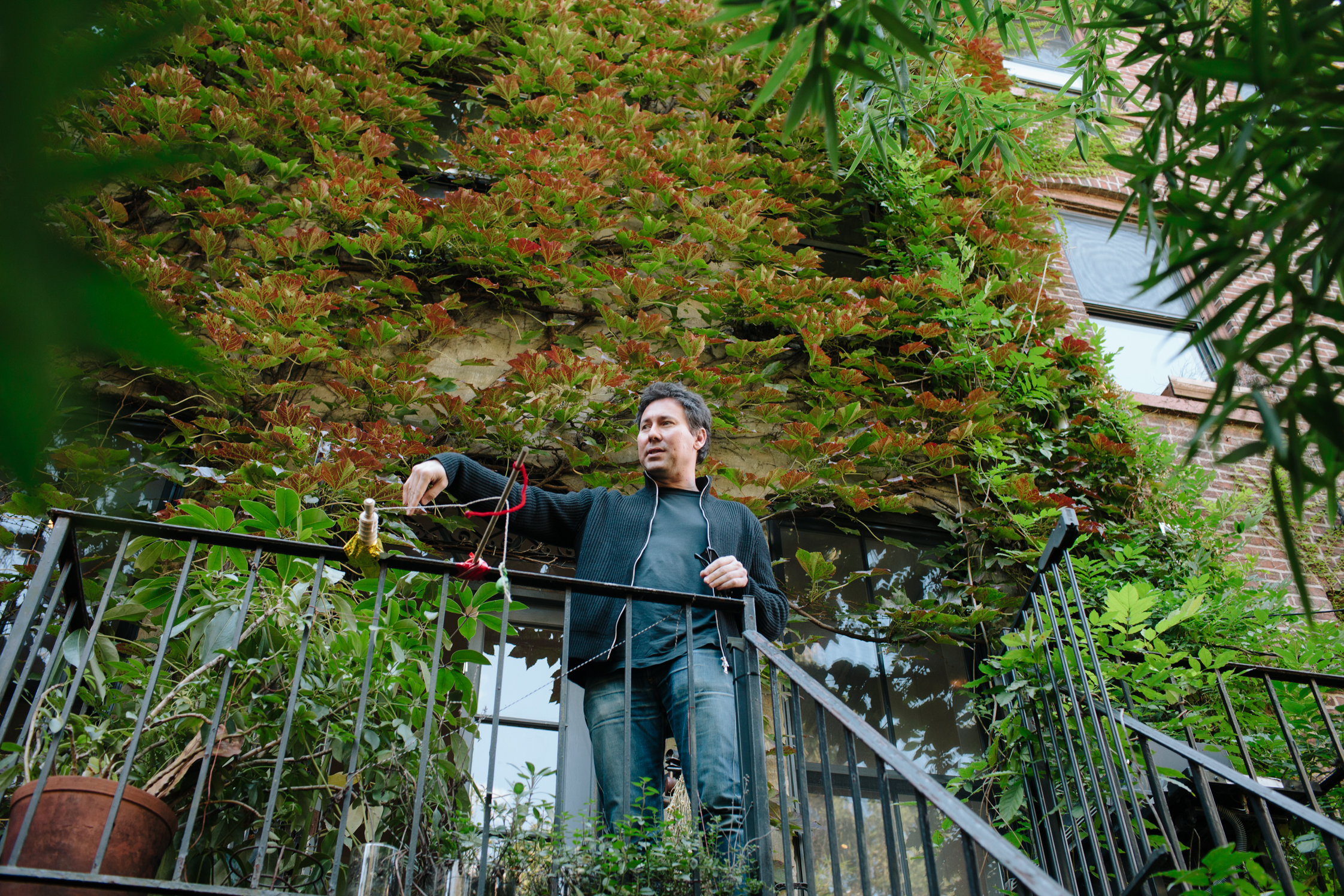
Blue Bottle Café
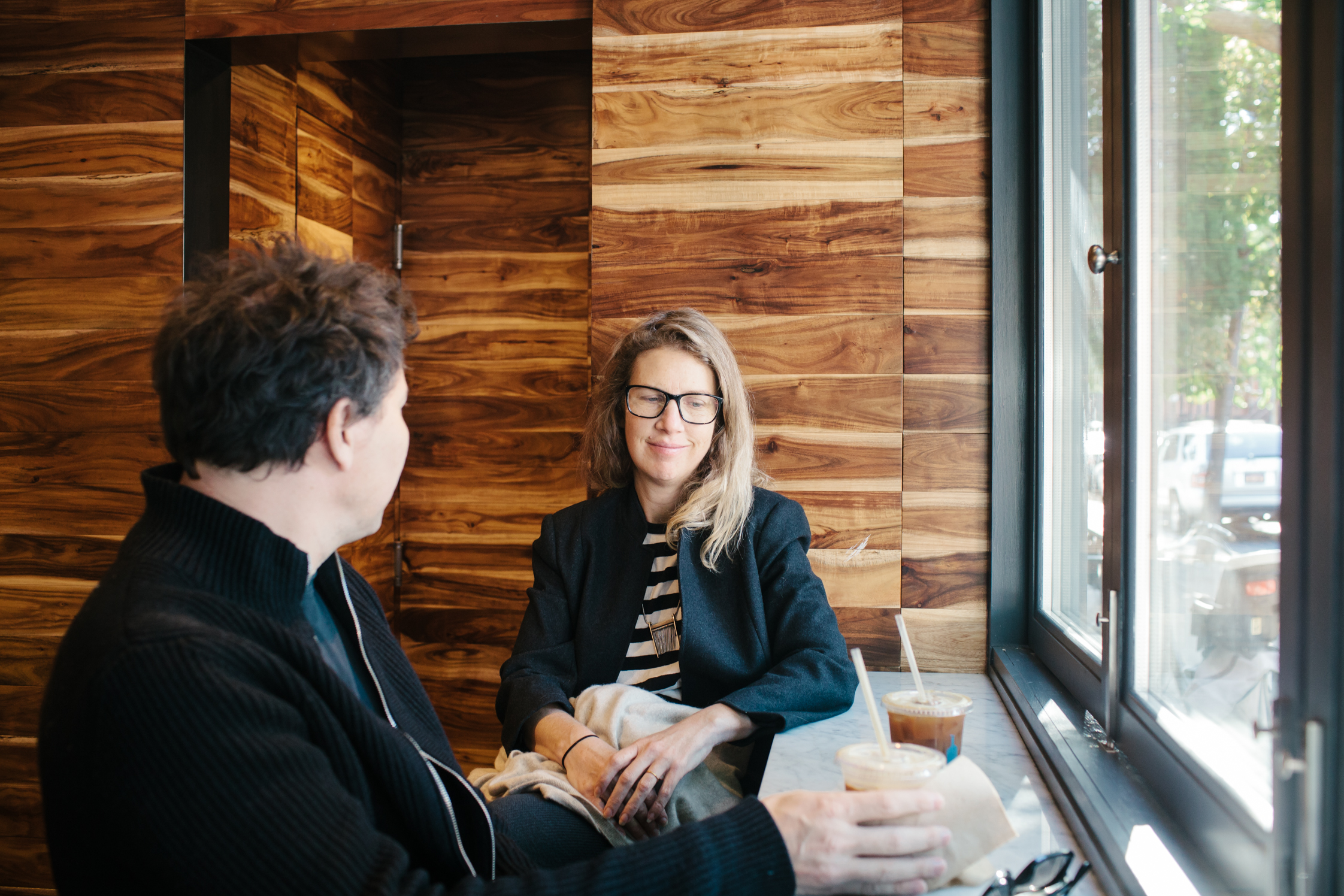
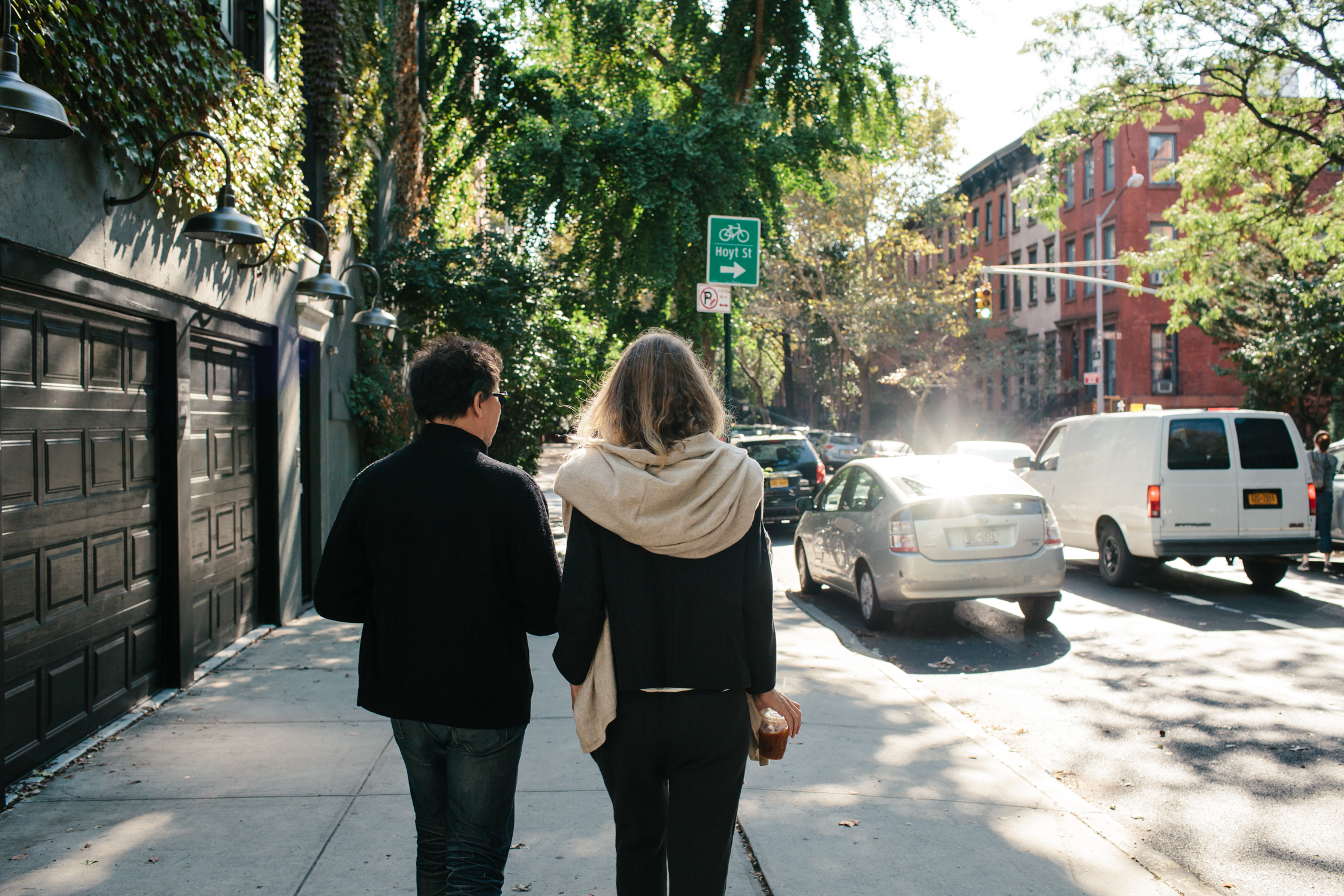
-
Tell us more about the process of opening the store. You had a space on Division Street to start, and now there’s a location on Orchard Street, and another at the Ace Hotel. How did this all come together?
Elizabeth: We opened on Division Street first. At the time, we didn’t expect it to become our main focus — we were on a sleepy street with modest ambitions. We didn’t know if it would live beyond its lease. We put a lot of time and thought into building the space. We loved it, but eventually we were priced out of it.
Brian: The Orchard Street space and the Ace project happened at around the same time, in 2009 or 2010. The Ace approached us to do a store at their Manhattan hotel, which was an idea that seemed very interesting to us. We travel so much — as designers, as a couple, as parents — that we had lots of ideas about what would make the ultimate hotel store. -
What does make the ultimate hotel store?
Brian: The typical experience used to be that you’d run down to the hotel shop if you needed something, and everything would be way overpriced or not at all what you wanted — and you’d just be stuck with whatever was there. We wanted to re-imagine that scenario. We wanted to offer lots of options, at lots of different price points. We wanted there to be things you might need immediately, as well as good reading material and souvenirs that really meant something from that place. You’d walk away and think, wow, I can’t believe I found all of that here, and you wouldn’t necessarily feel gouged. You’d feel welcomed. That’s what we were going for.
Elizabeth: That store, I think, does really reflect New York. It’s a specific view of New York, but it’s an authentic view. It’s very much about this city.
Project No. 8 at Ace Hotel
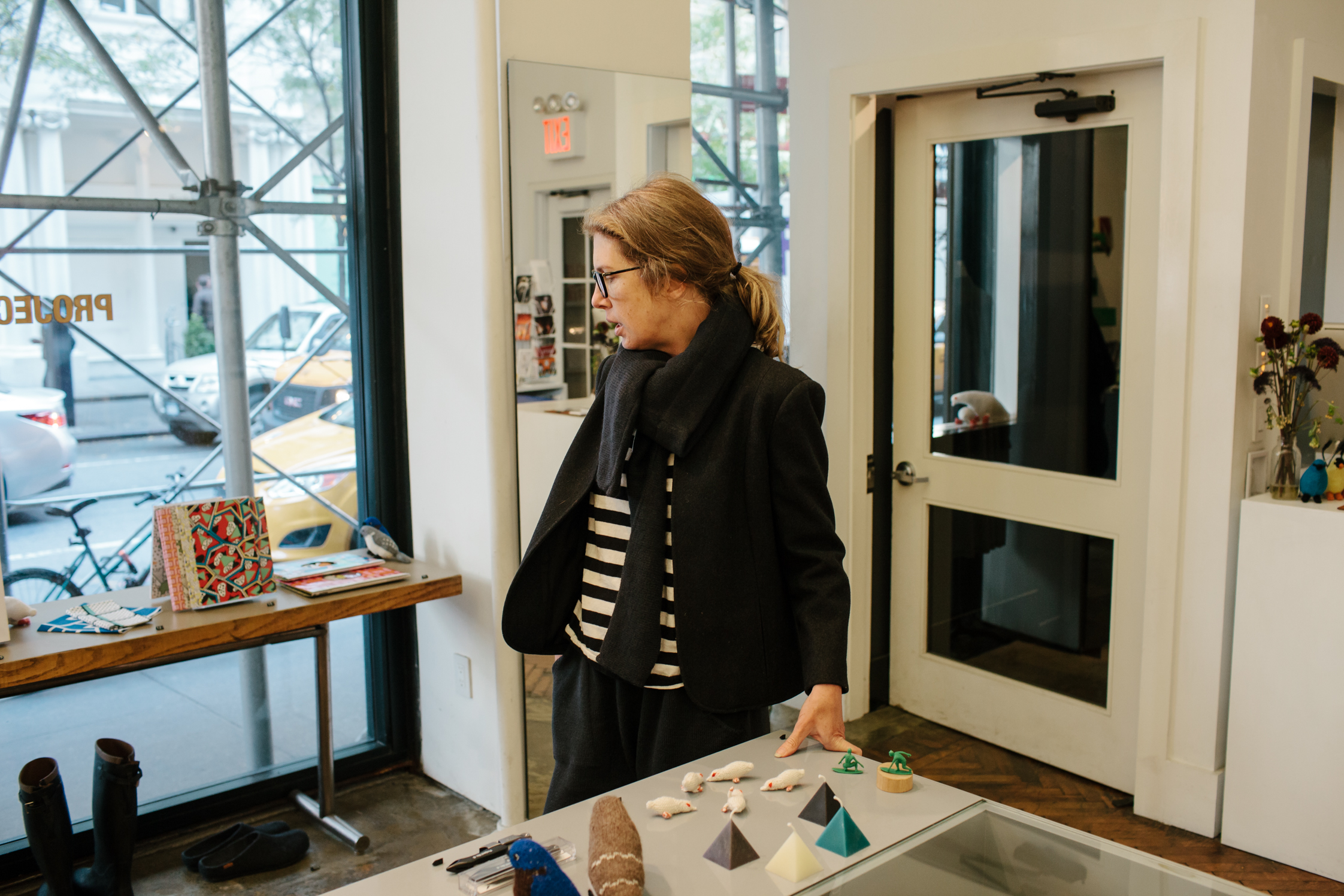
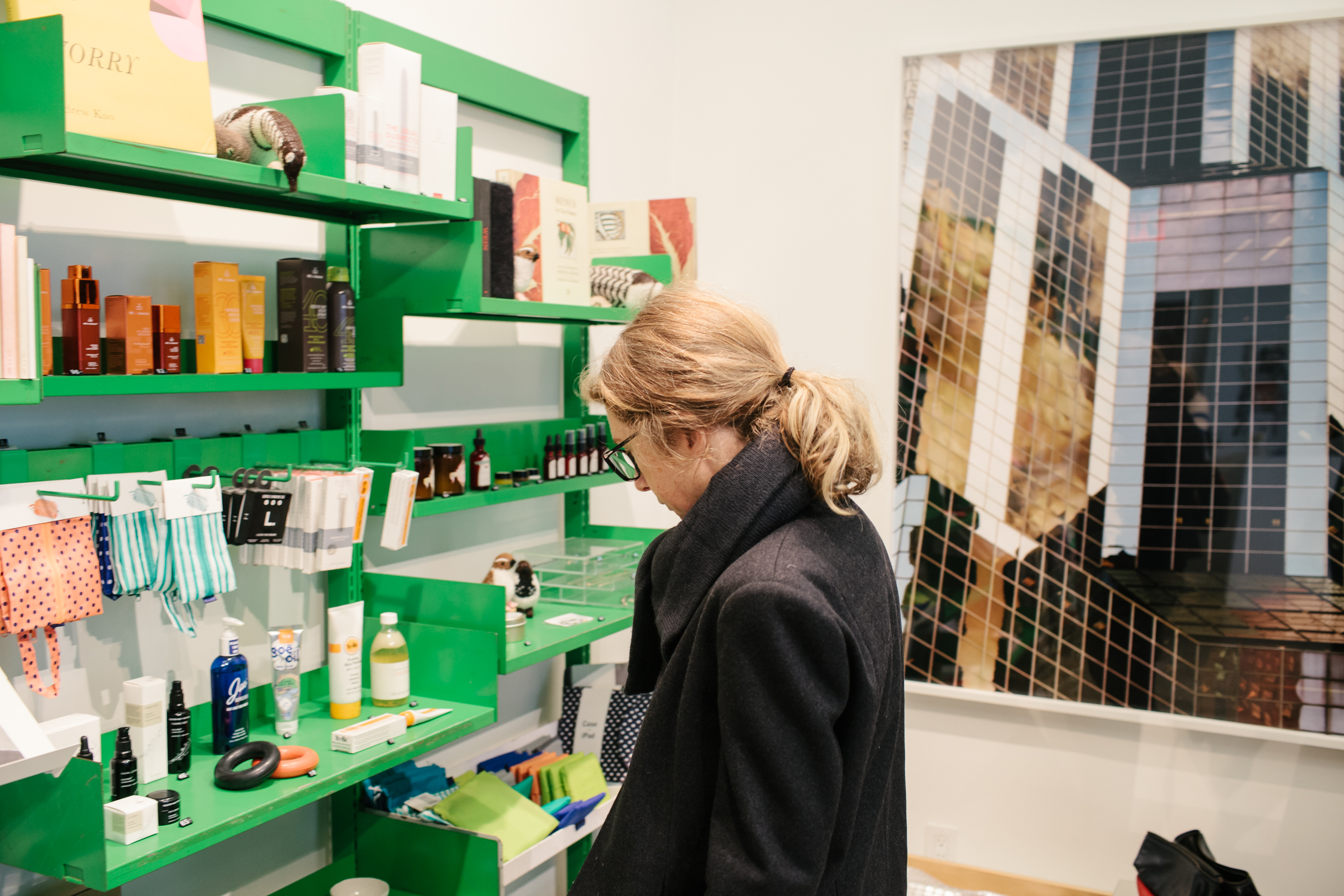
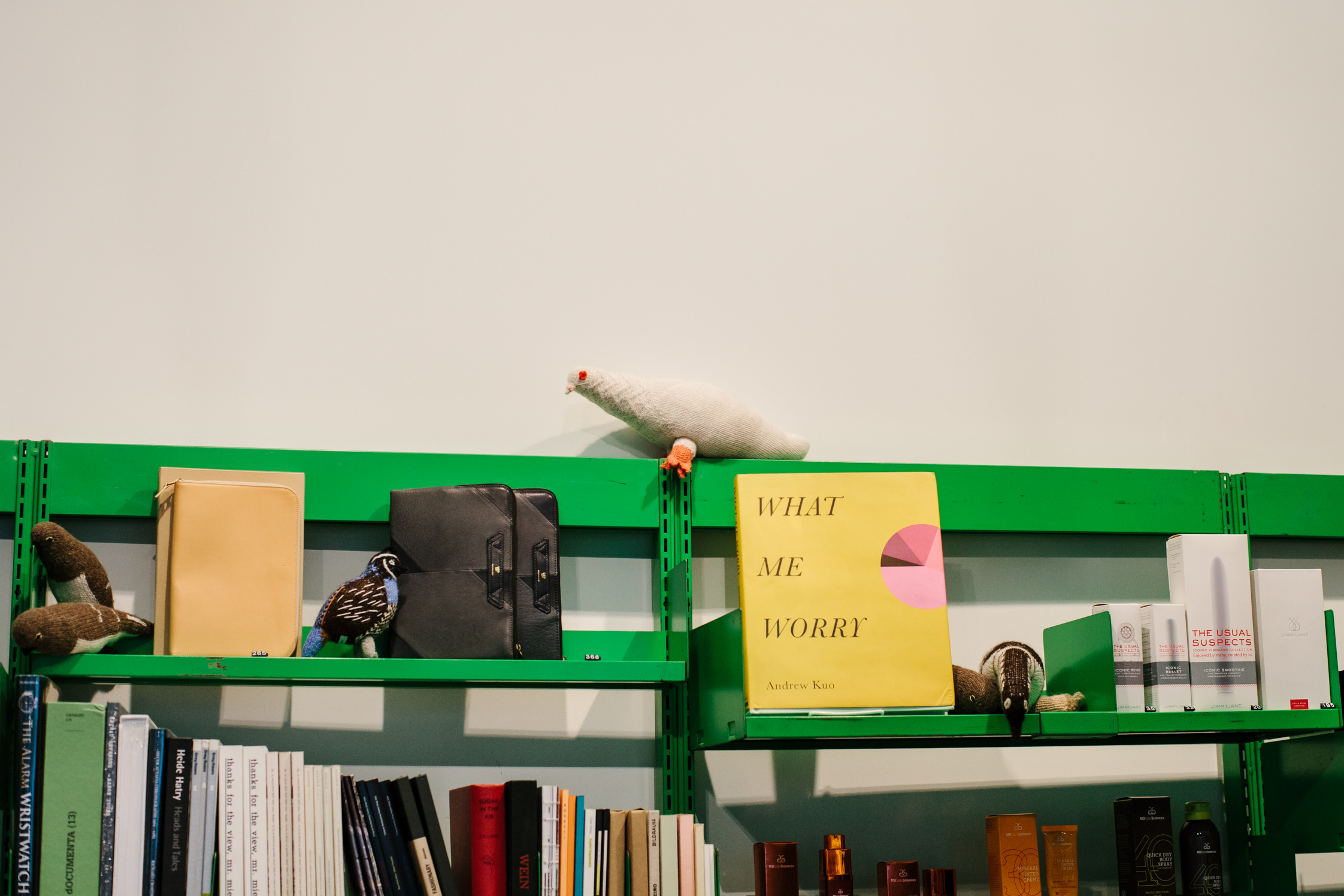
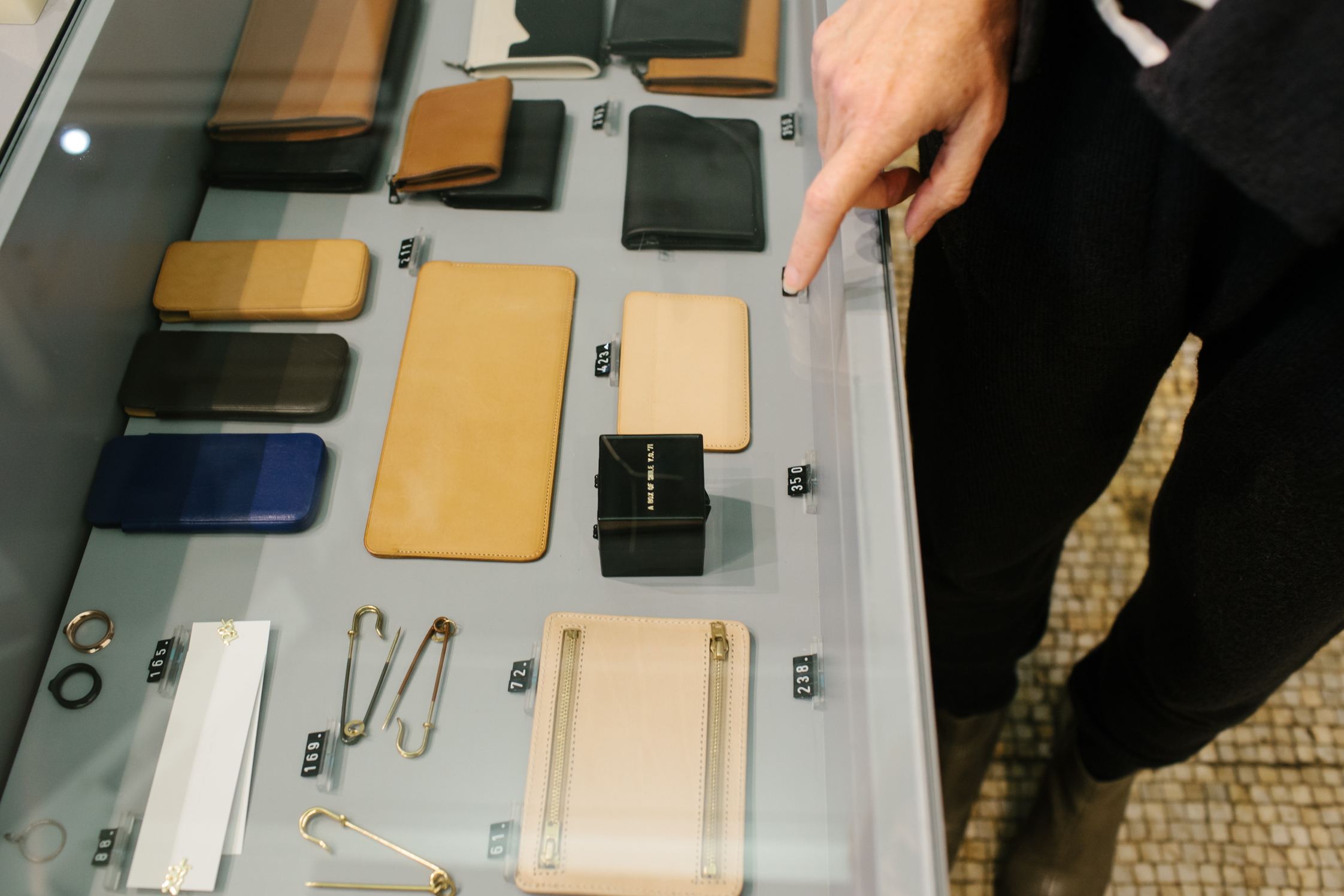
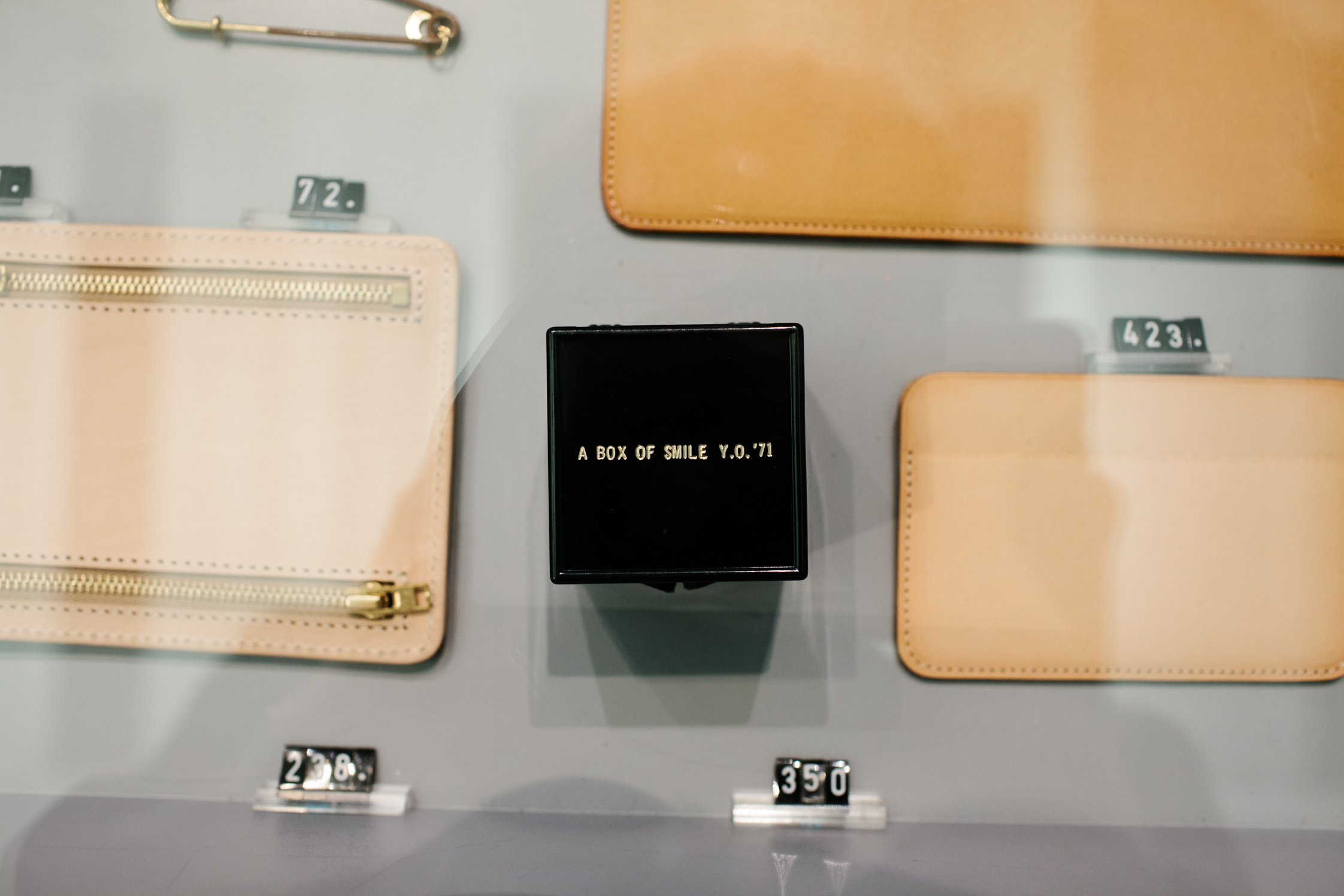
-
Has the experience of running the hotel shop differed significantly from that of running your other shops? Has anything surprised you about it?
Brian: One thing that we couldn’t have predicted is that when it comes to who shops there, it’s pretty much 50/50 in terms of tourists and locals. It broke right down the middle in almost every category: gender, age, traveler versus resident. We have lots of regulars.
-
That’s rare for a hotel store. Why do you think that is?
Elizabeth: I think it’s a combination of what’s in the store and who’s working there. We have a great team who have built real relationships with people who shop there.
Brian: As shoppers ourselves, we already knew that the experience of going into a place and having the people who work there look you up and down was terrible — we knew we had no interest in that. We wanted to create a space that felt welcoming, and we wanted to hire interesting people you’d want to have a chat with. Even though it’s a store that sells clothing, it’s not really about fashion for us. It’s about conversation. Our stores are microcosms of how we like to experience the world.
Various Projects Studio
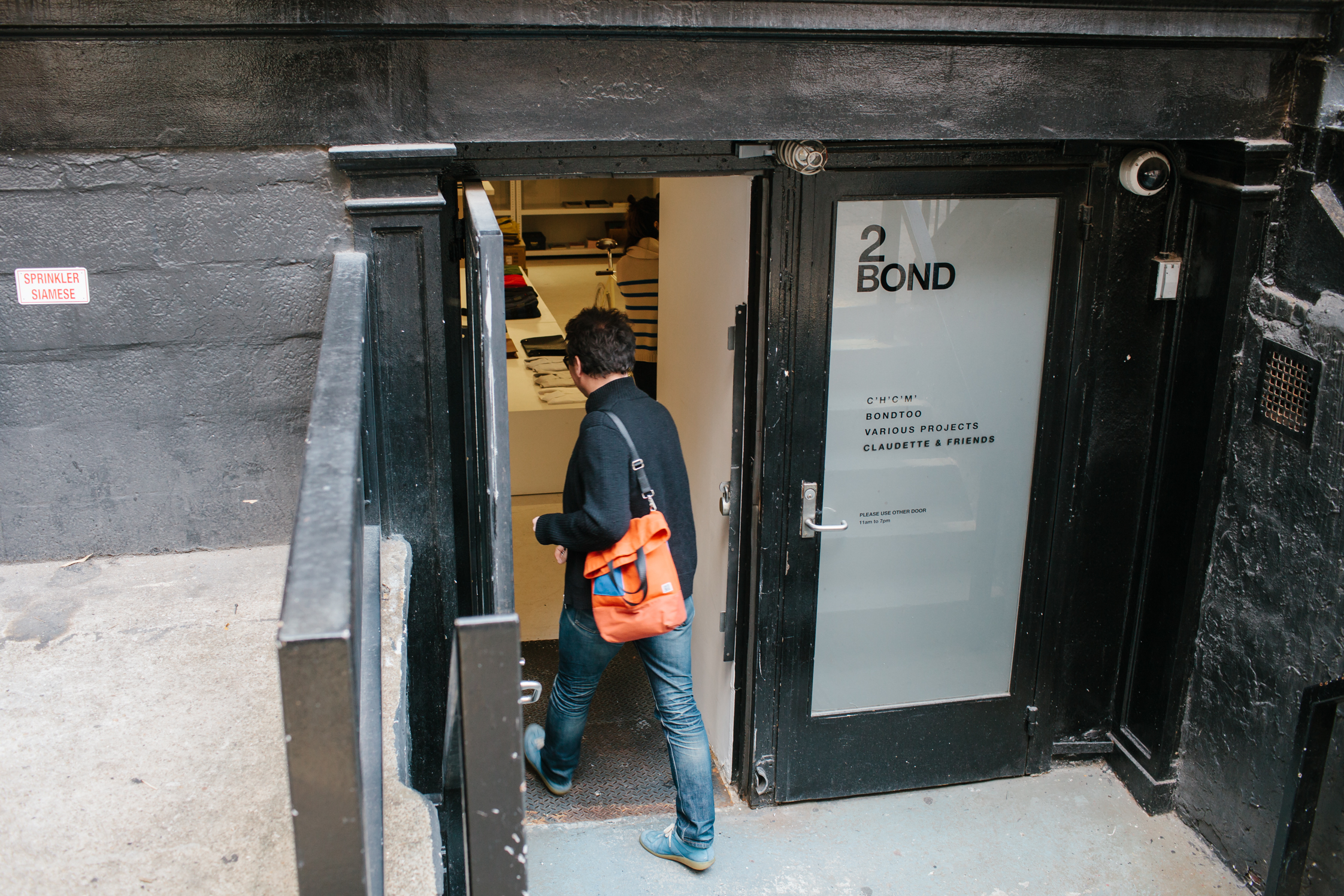
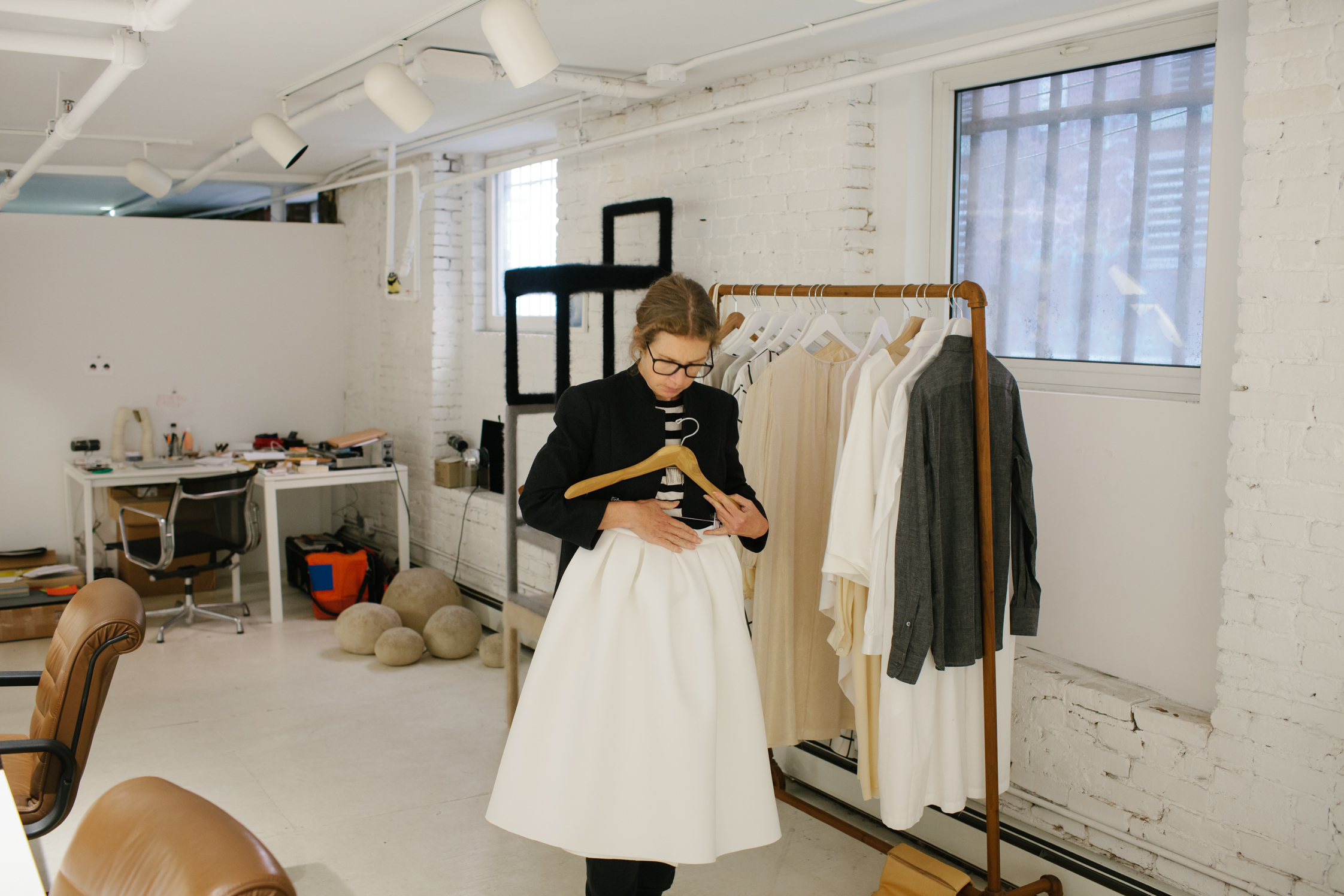
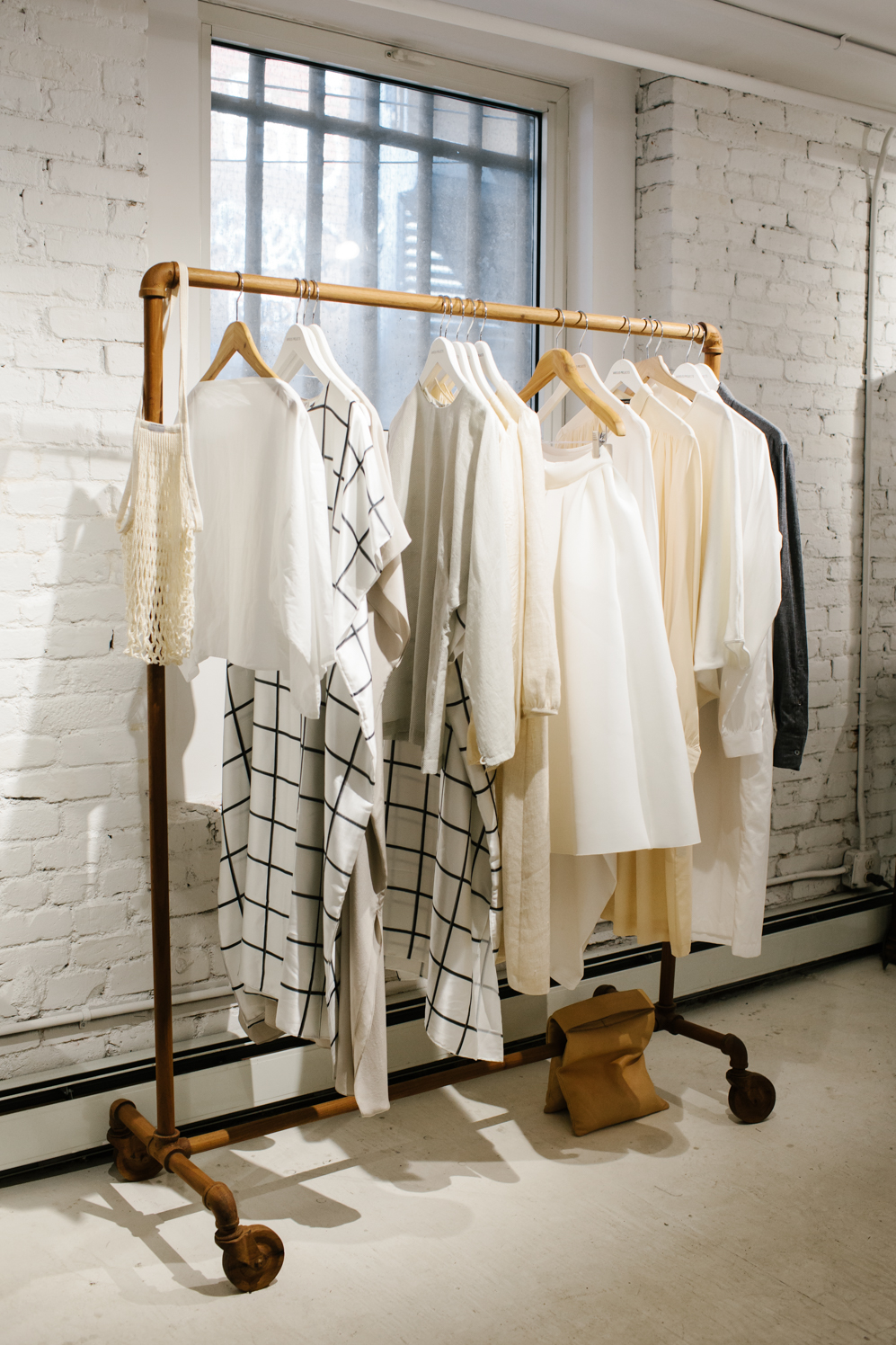
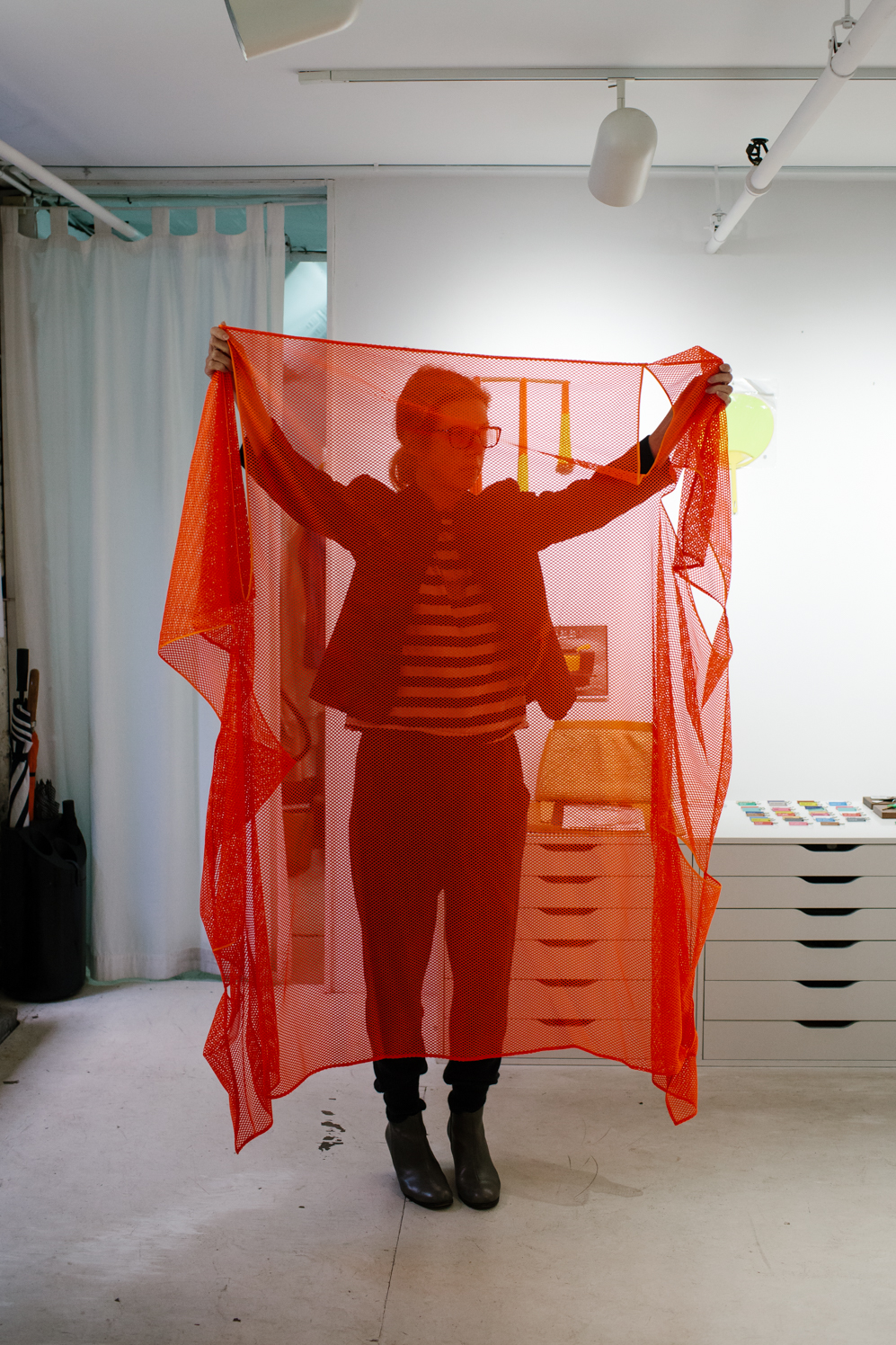
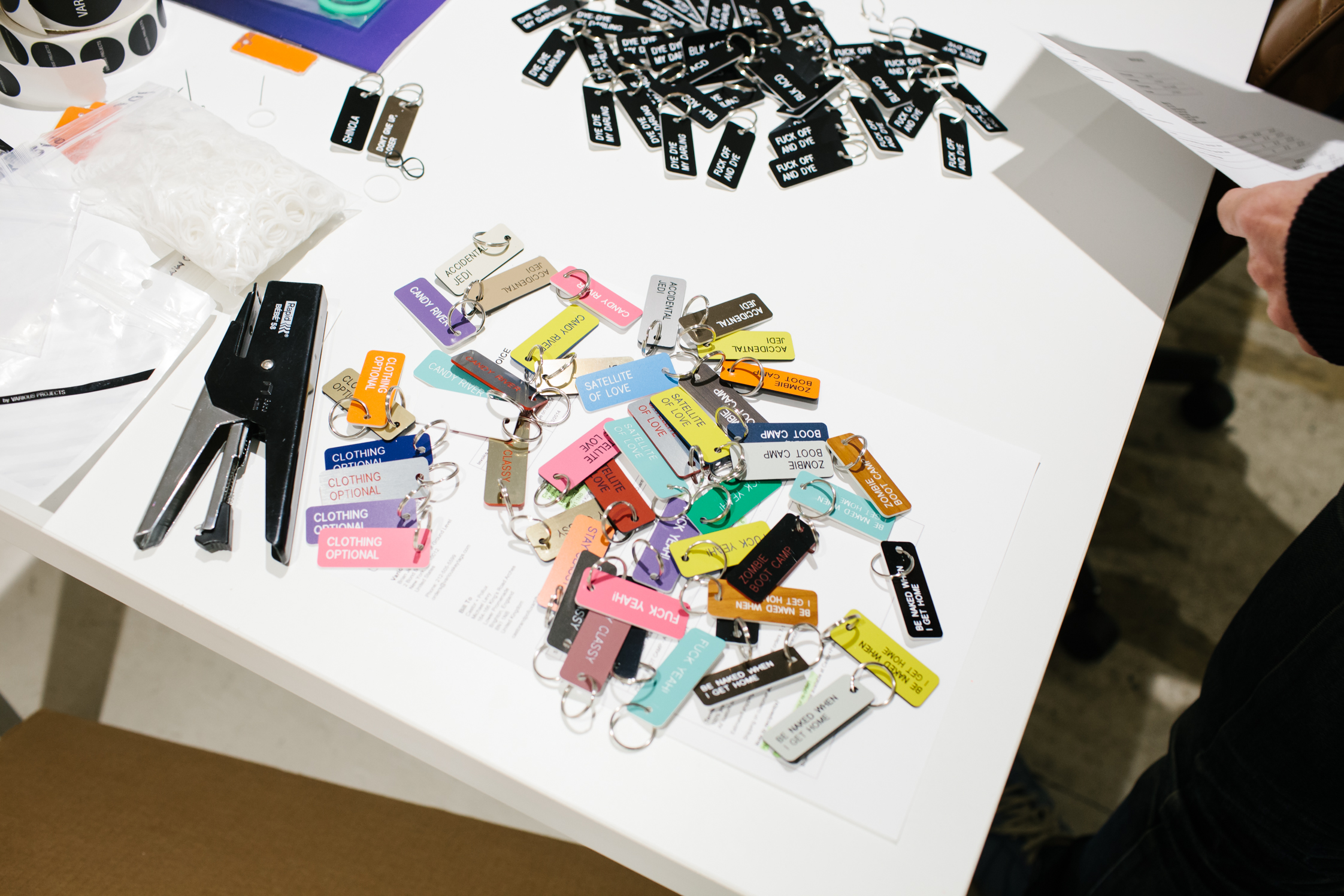
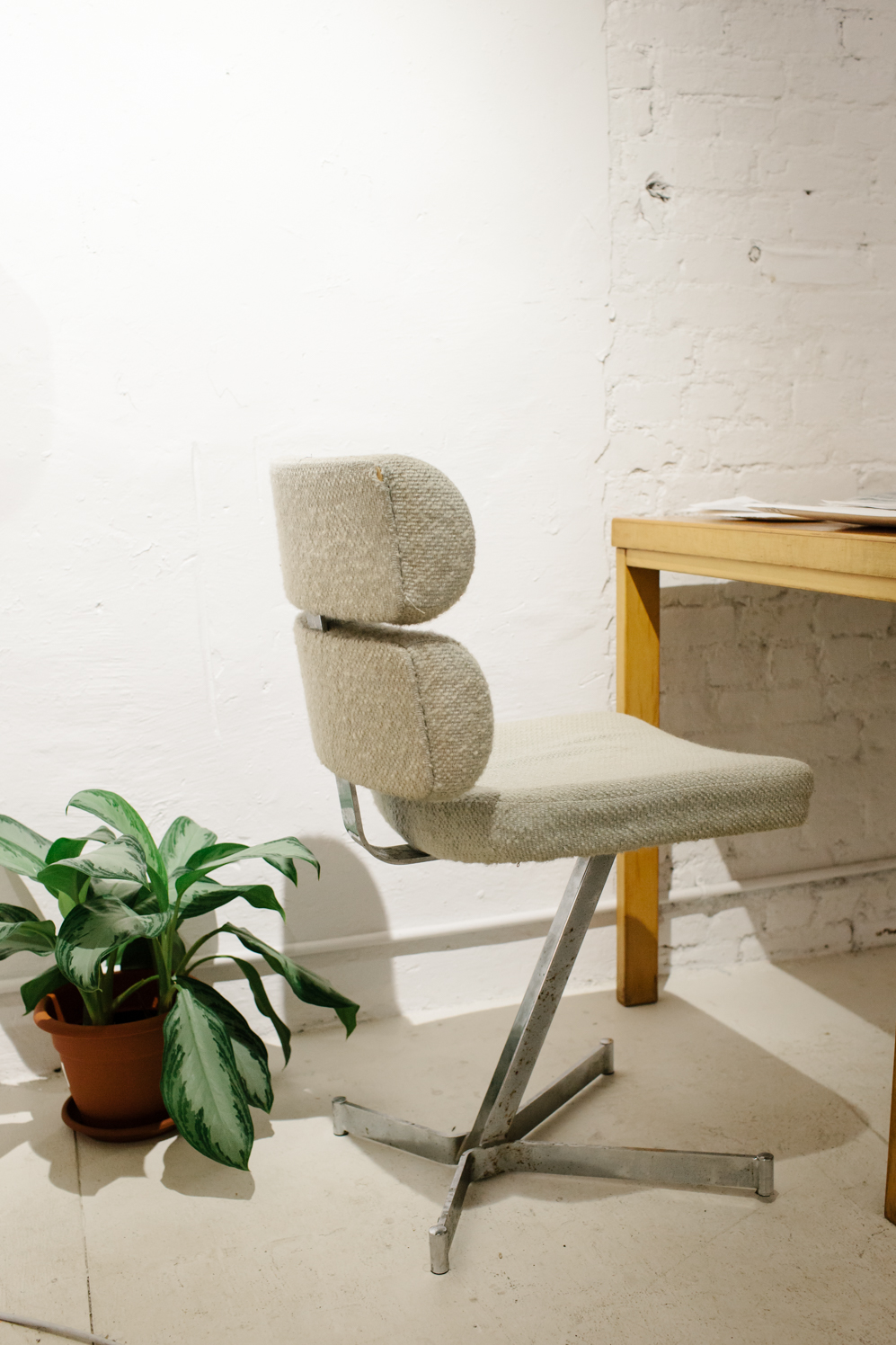
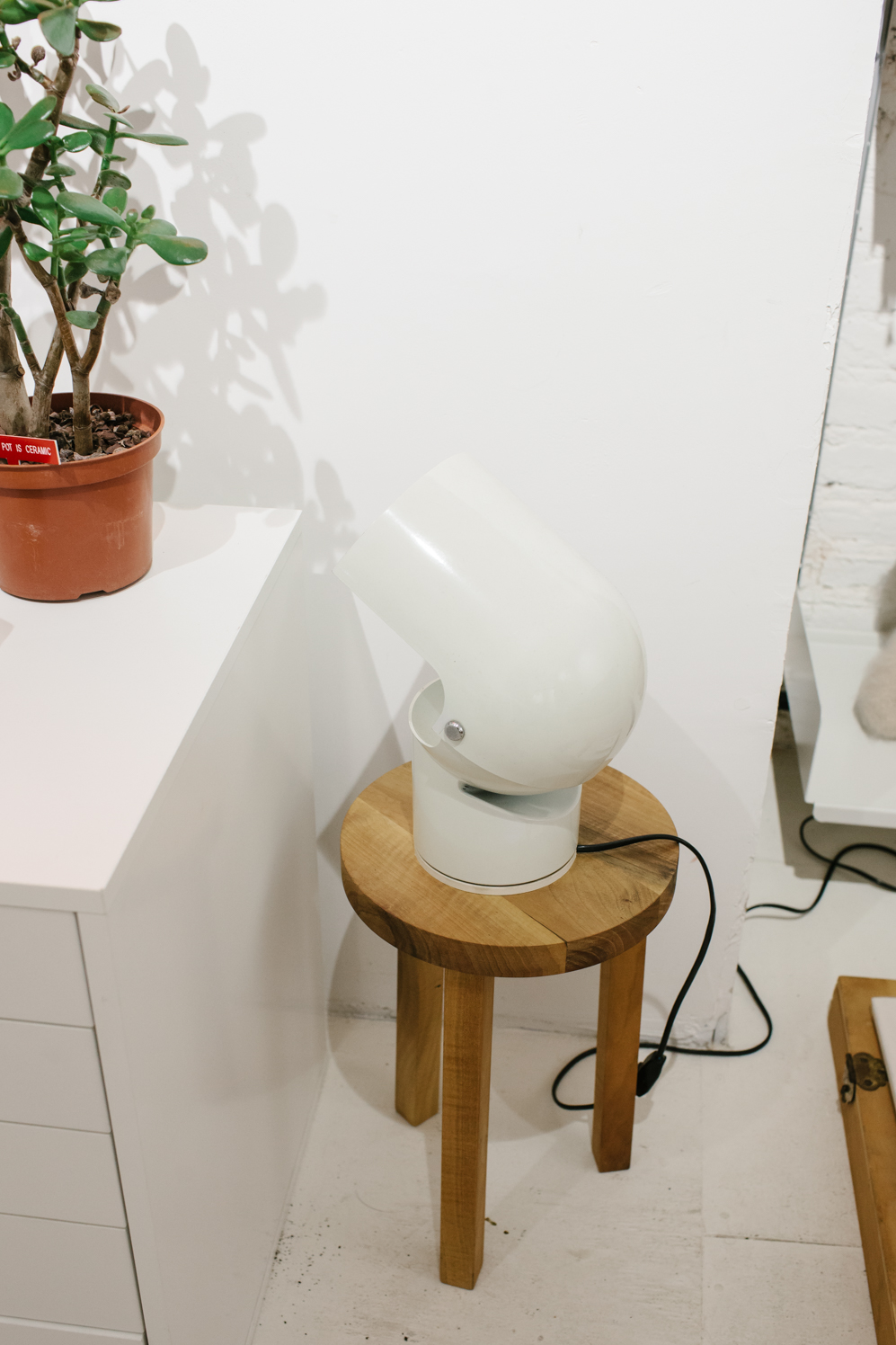
-
What’s the story behind the ‘Various Projects’ key tags?
Brian: We’d been collecting key tags for years before we decided to create our own. The shape is a French standard — normally, it’s a really straightforward and pragmatic thing, but our idea was to use it as a platform to create something simple and dumb and accessible and happy. We do so many projects that have a really long arc or involve a lot of stamina, and this is something quick and immediate. It keeps energy flowing in the studio.
-
You’re attracted to people whose work transcends genres — what else draws you to an artist or a designer’s products when you’re choosing what to stock in your store?
Brian: We’re really attracted to people who seem fully engaged in what they’re doing. We like when there’s not a lot of artifice to it — they’re just doing what they’re doing, and there’s some level of quality and skill and thought and excitement about whatever it is they’re involved in. We gravitate toward that. Pulling these people together — who are all doing different things, but with a similar vigor — is what’s most exciting to us about creating a store.
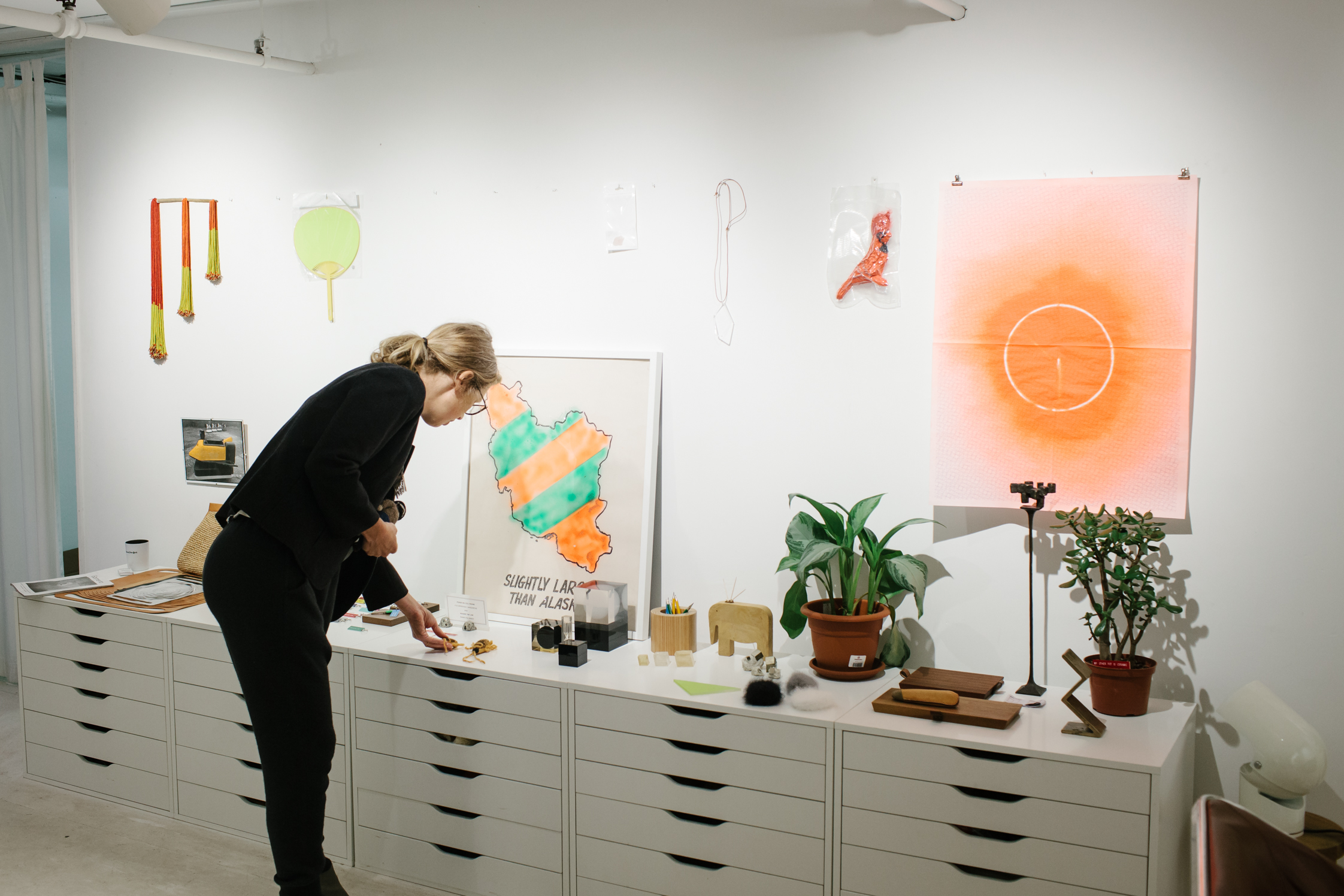
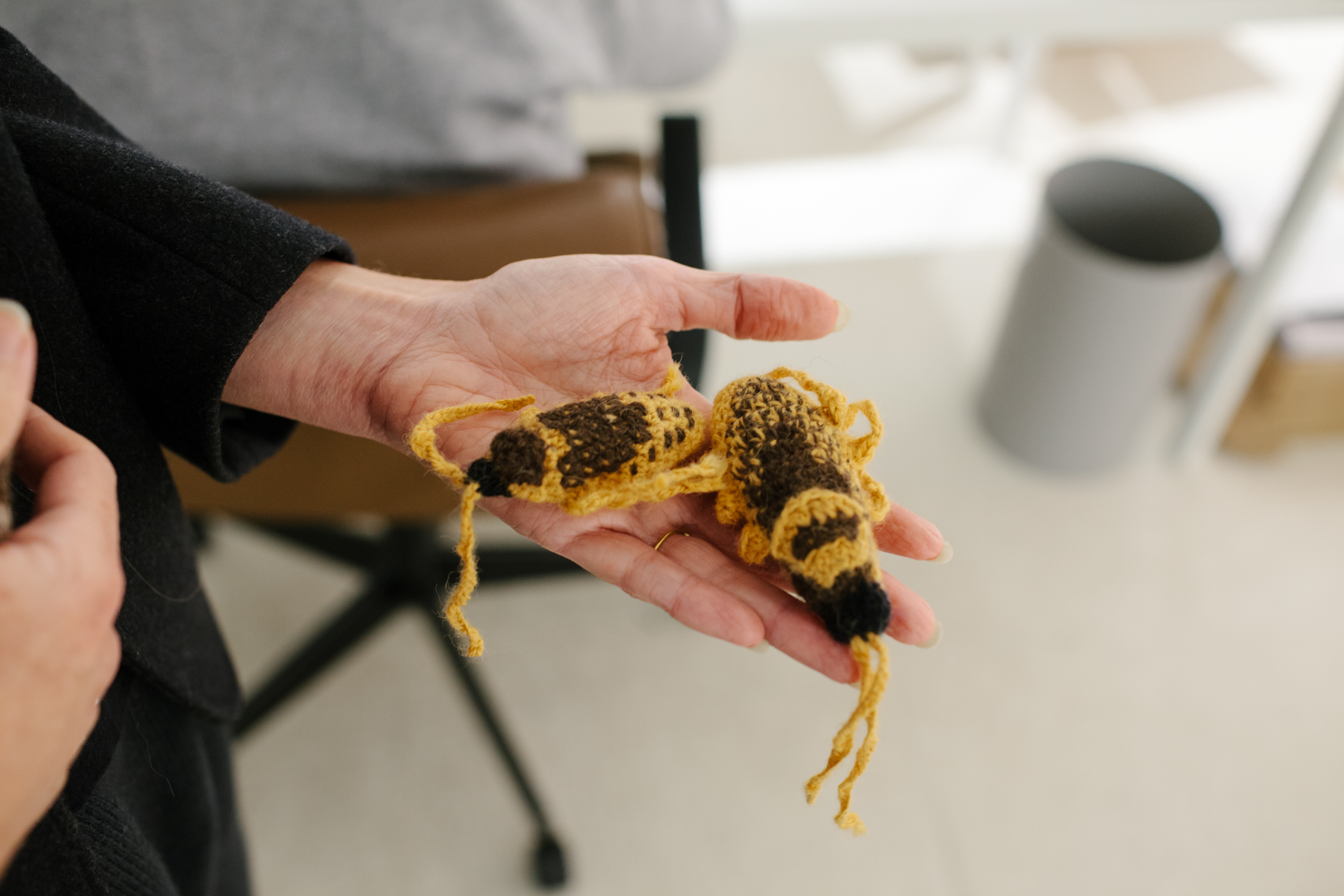
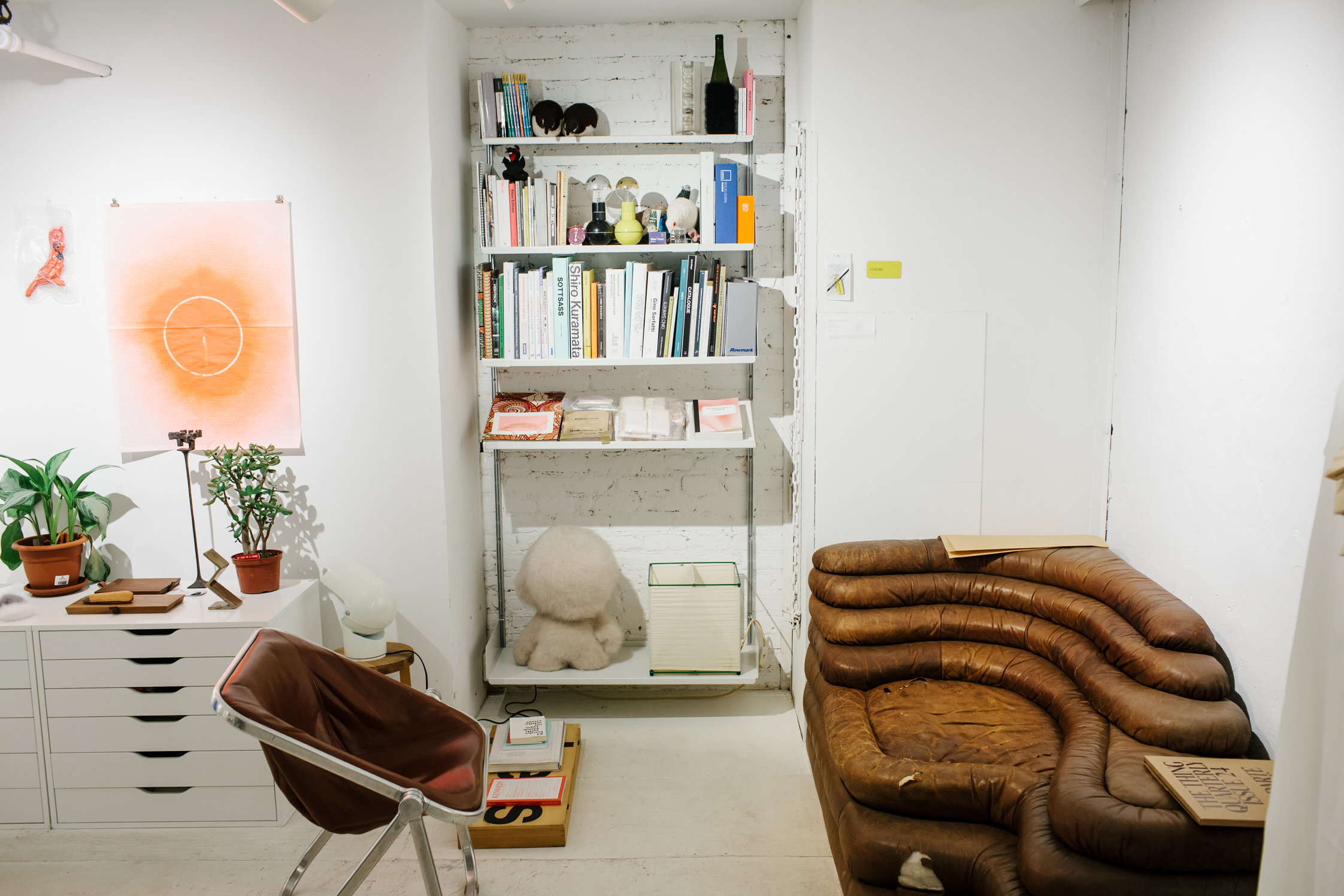
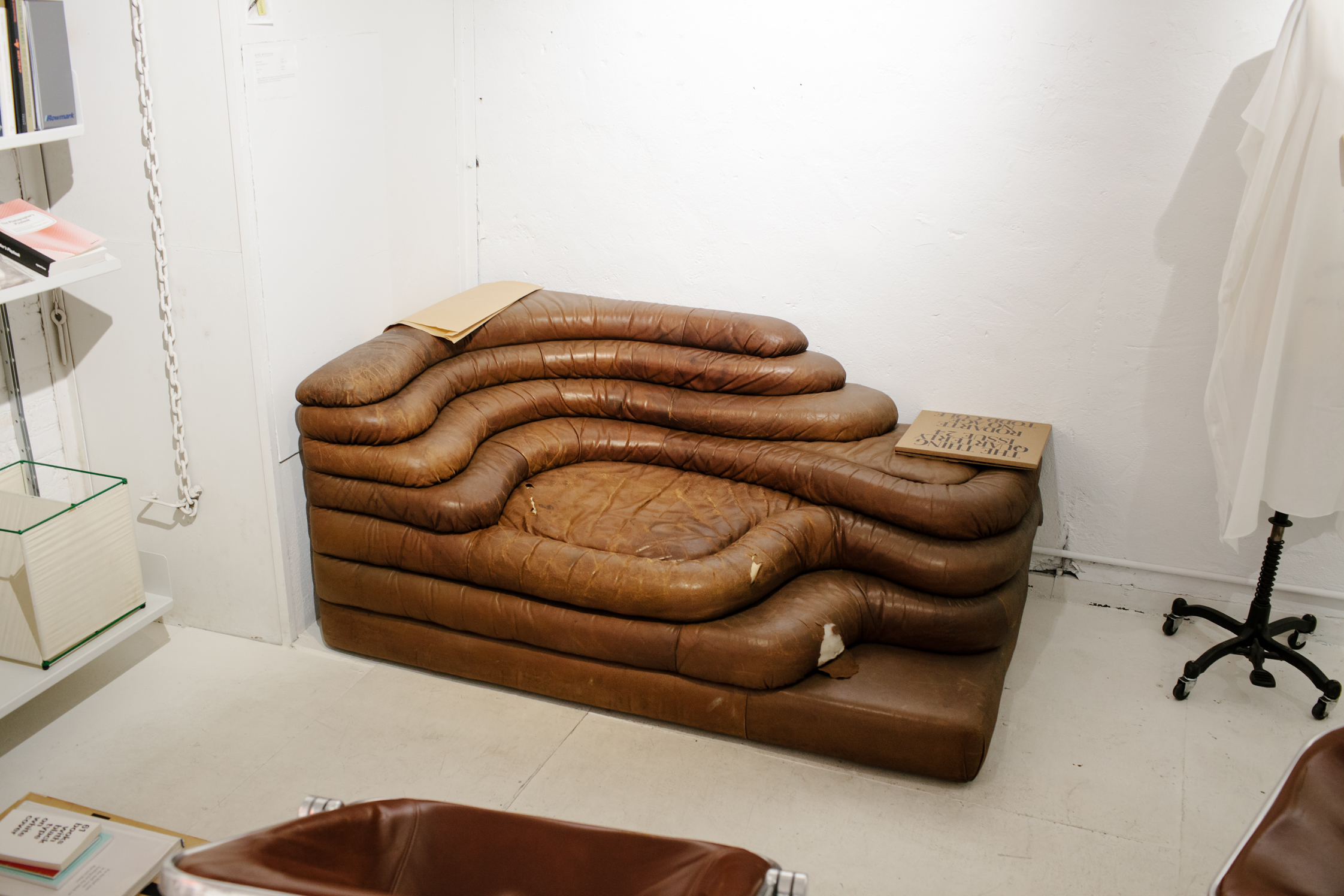
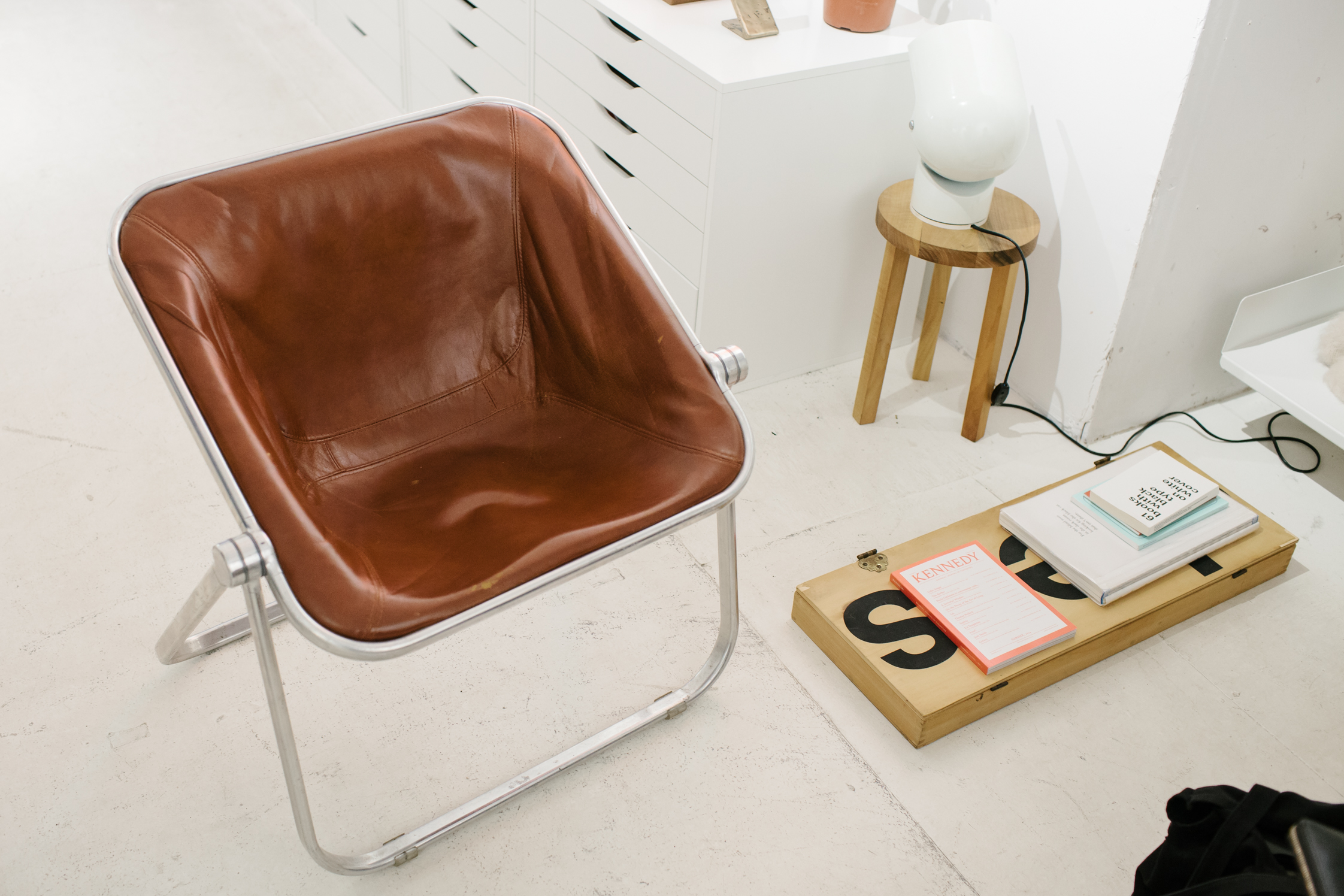
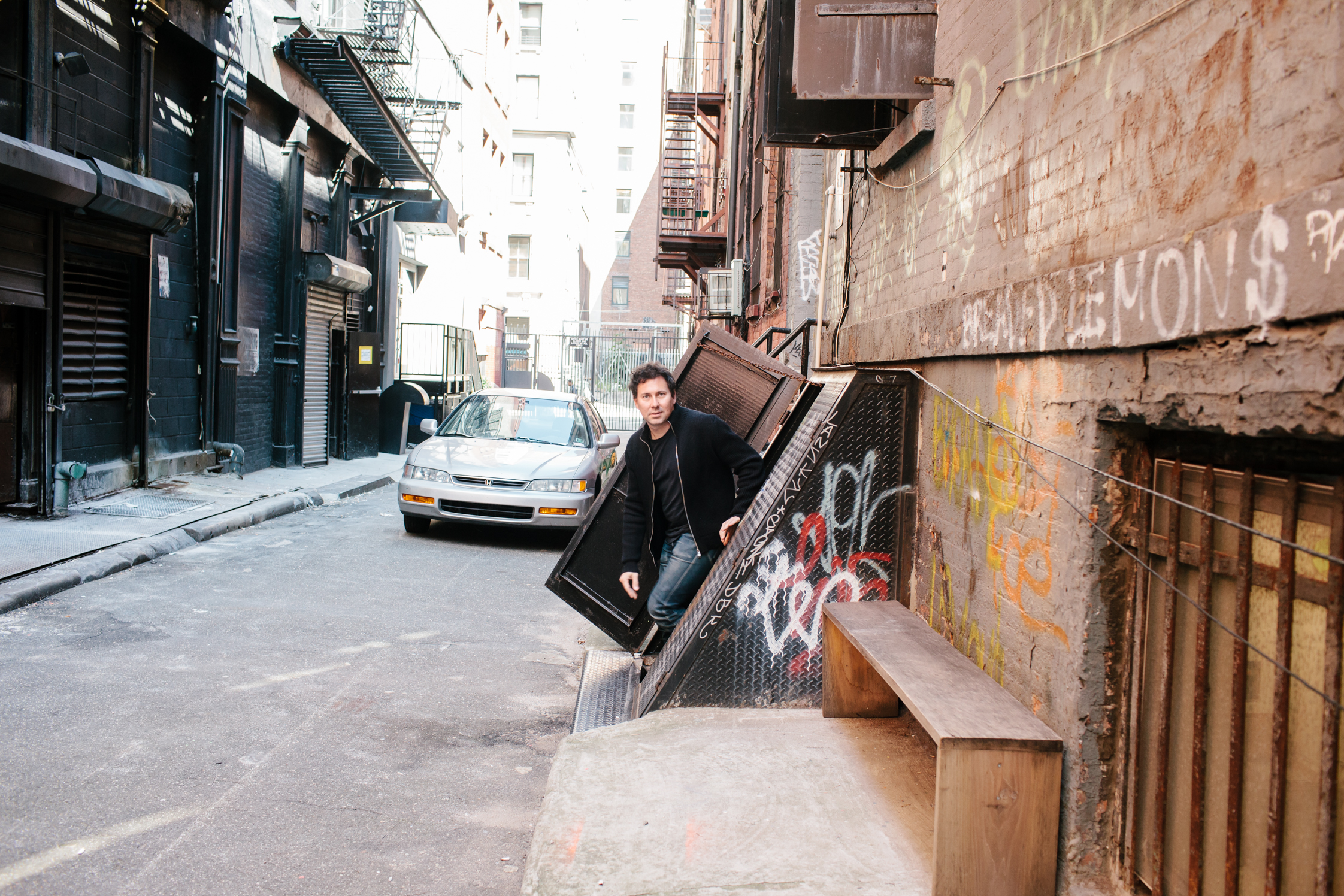
-
You have a note about digressions on your website. In a way, digressing seems to be a theme for the two of you in everything you’ve done.
Elizabeth: We think of it as a sort of creative formula.
Brian: And we think of it as positive. Digressions are exactly where you stumble on the most interesting things.
Elizabeth: It’s just important to identify the right ones, the ones that have promise.
Brian: There’s power to digressions. We’ve always thought, let’s focus on that.
